The Bronx of the 1940s was a story of two halves. The first, painted with the vibrant brushstrokes of wartime mobilization and industrial strength. The second, shadowed by the somber hues of postwar transition and social unrest. Let’s delve into this dynamic era of the borough
The Impact of World War II
The onset of World War II saw the Bronx playing a crucial role in the national war effort. Many of its residents served in the armed forces, while those on the home front contributed through work in defense industries and participation in wartime initiatives. The borough’s factories and businesses adapted to support the war, producing goods and materials essential for the military.
The war also brought about significant changes in daily life in the Bronx. Rationing of food, gasoline, and other commodities affected households, while air raid drills and blackouts became part of the routine. The sense of community and shared purpose was strengthened as Bronxites rallied to support the war effort through bond drives, volunteer work, and other patriotic activities.
Victory and its Aftermath
As the war ended, a wave of relief washed over the Bronx. Yet, joy was quickly tempered by the challenges of demobilization and economic uncertainty. Factories shuttered, unemployment rose, and the wartime boom turned into a postwar bust. The Bronx was not immune to the nationwide housing crisis, with overcrowding and poor living conditions plaguing many residents.
Urban Development and Housing
In response to the housing crisis exacerbated by the war and the influx of new residents, the 1940s saw an expansion of public housing projects in the Bronx. Developments such as the Edenwald Houses provided much-needed affordable housing options for low-income families, addressing some of the borough’s most pressing social issues.
This decade also saw continued investment in the borough’s infrastructure, with improvements to roads, bridges, and public transportation systems. These developments aimed to accommodate the Bronx’s growing population and enhance connectivity within the borough and with the rest of New York City.
Despite the hardships, the Bronx continued to be a vibrant center of music and culture. Bebop, a revolutionary jazz style, emerged in the borough’s clubs, featuring legends like Charlie Parker and Dizzy Gillespie. Block parties became a vibrant expression of community spirit, where residents gathered to celebrate life with music, food, and dance.
#1 Star Drug, a business on Kingsbridge Road in the Bronx, 1946.
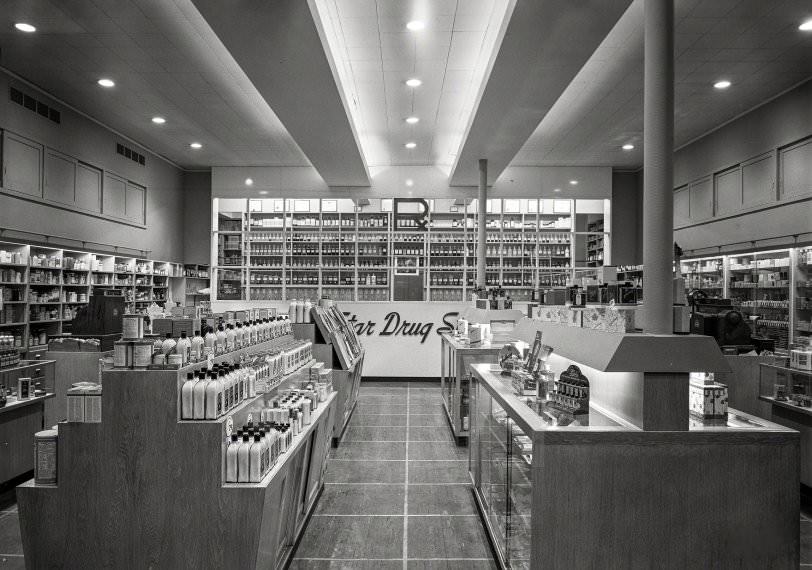
#2 High-angle view of Parkchester housing development and ground-level stores in the Bronx, 1940s.
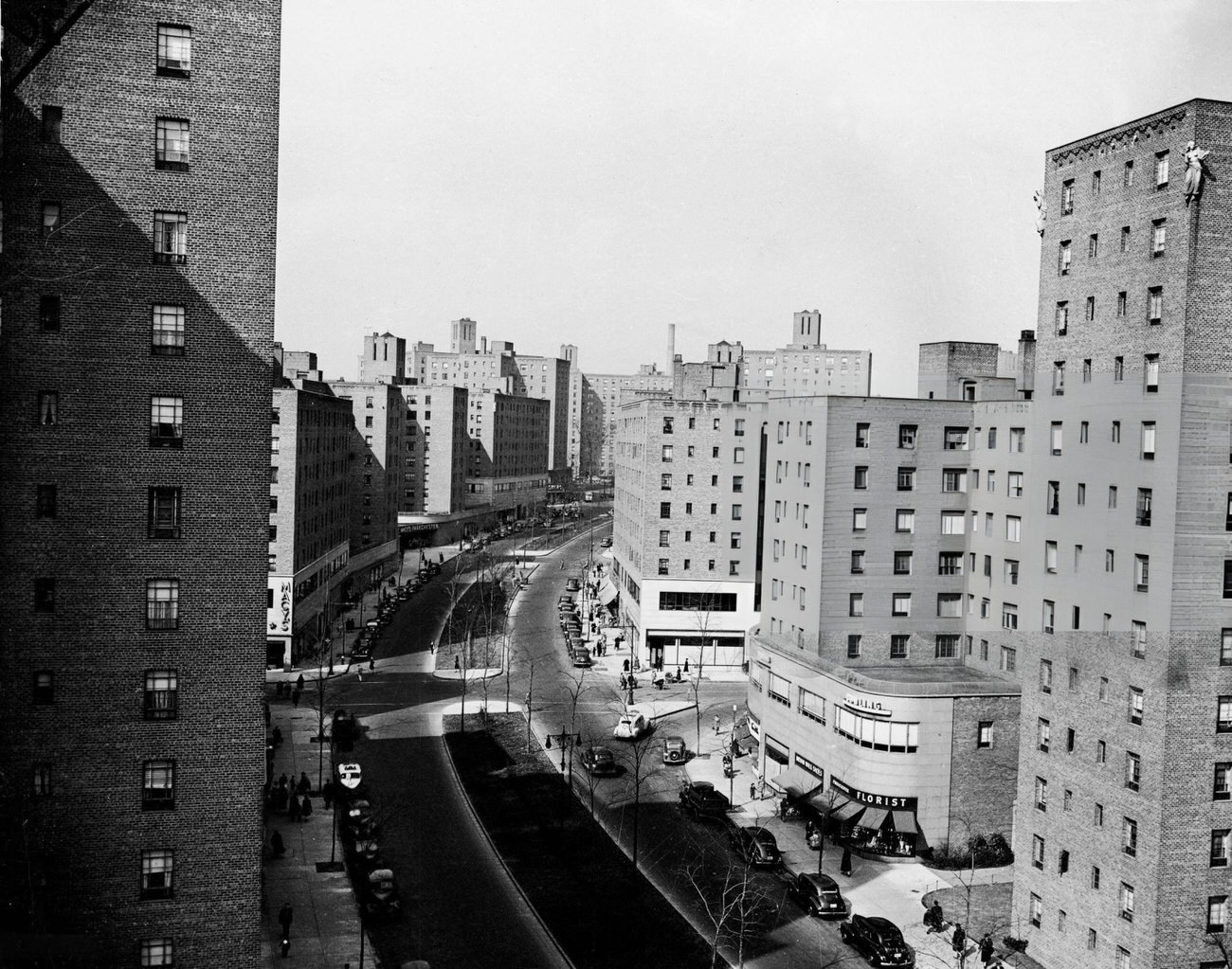
#3 The Bronx County Courthouse, a Classical Revival building designed by Joseph H Freelander and Max Hausle in the Concourse and Melrose neighborhoods, circa 1945.
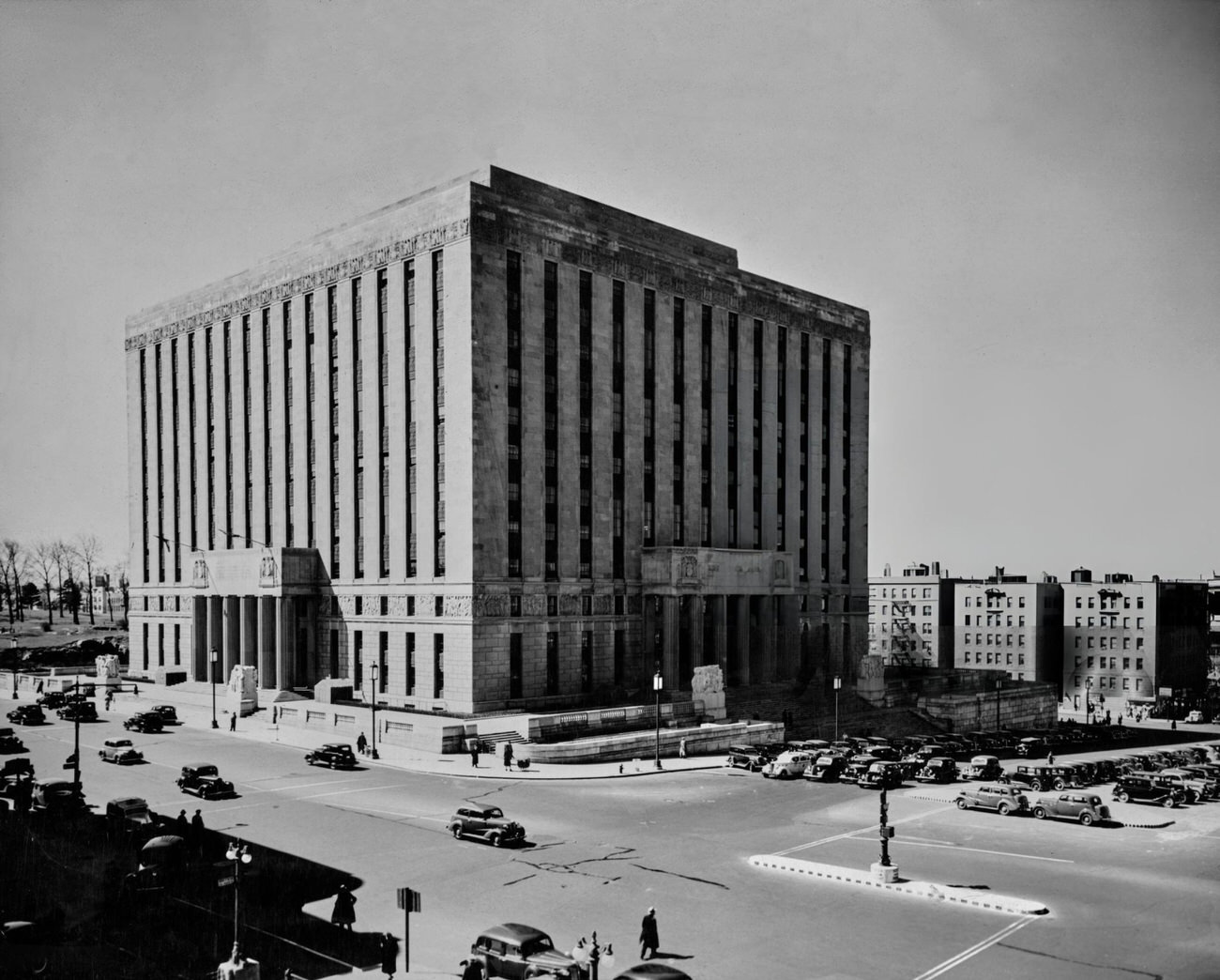
#4 People queue in heavy rain for nylon stockings outside Alexander’s department store in the Bronx, 1945.

#5 Wartime billboards for cigars, beer, and Coca-Cola, all promoting war bonds on Burnside Avenue in the Bronx, 1945.
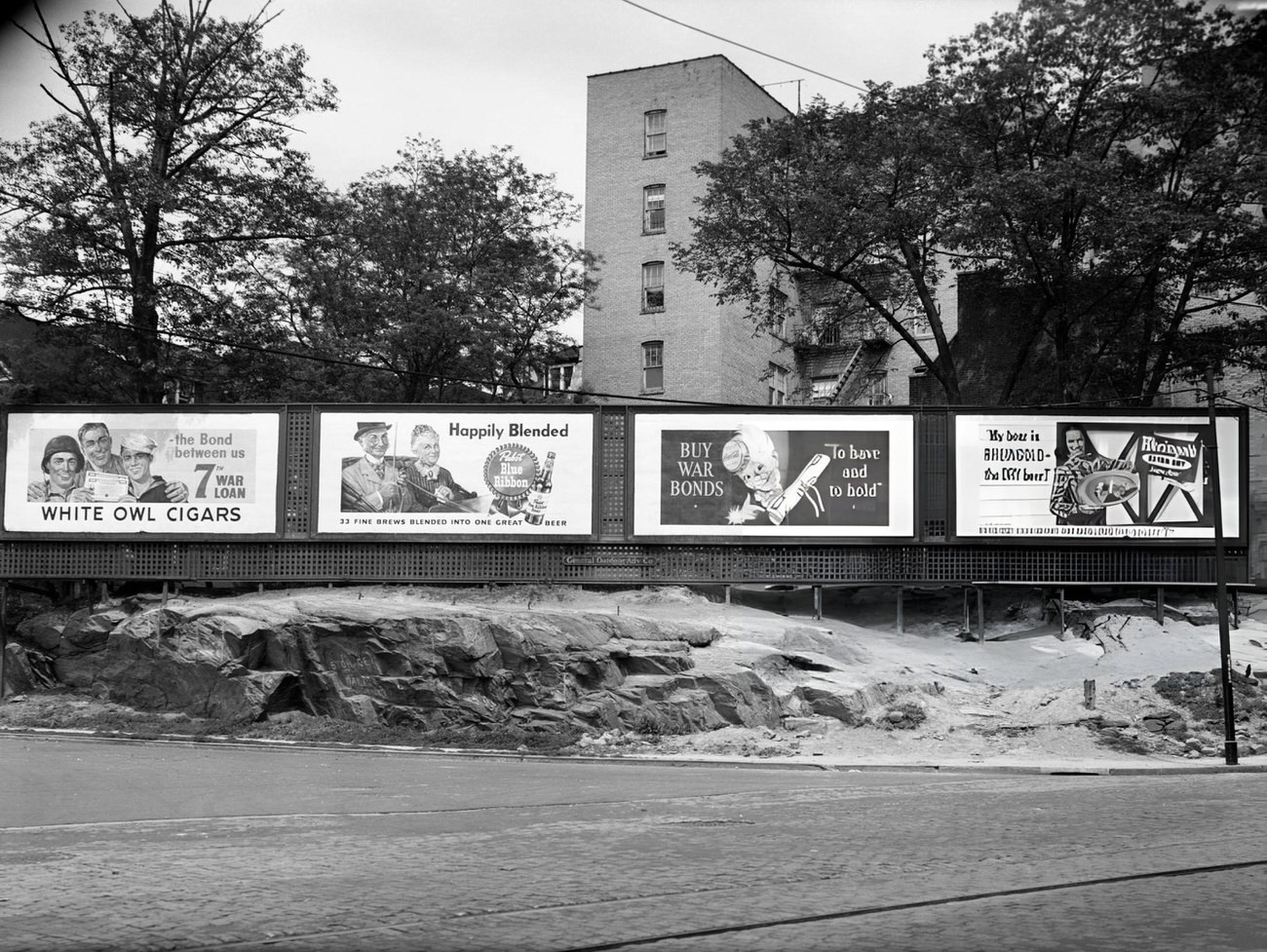
#6 T/4 Dorothy Johnson is satisfied as she leaves a post beauty shop in Los Alamos, her address being 1088 Anderson Avenue in the Bronx.
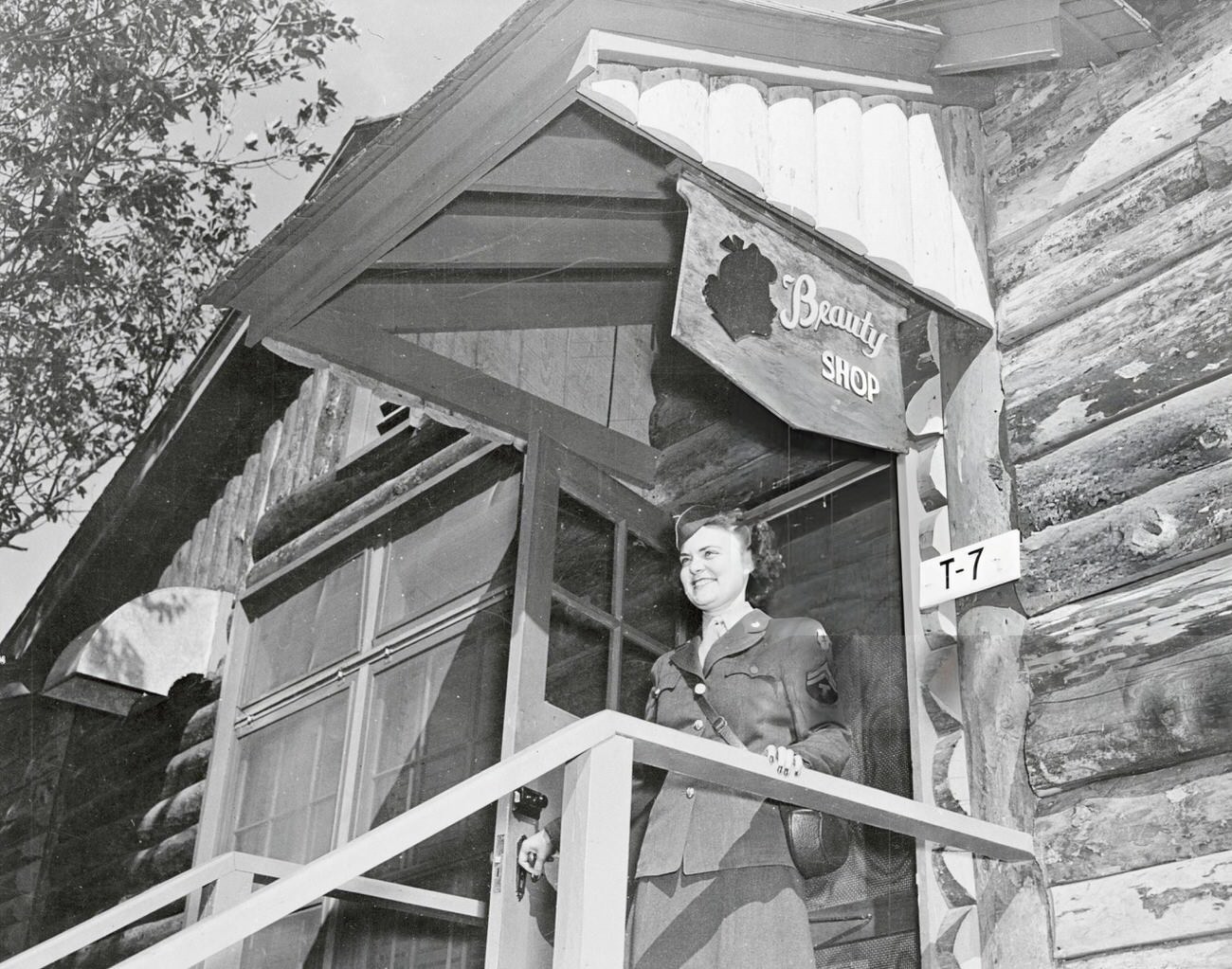
#7 Crowds gather at a shrine in the Bronx where 9-year-old Joseph Vitolo claimed to see a vision of the Virgin Mary at Van Cortlandt Ave and Concourse.

#8 A weatherbeaten Bronx resident battles wind and snow on his way home at 161st St. and Walton Ave, 1940s
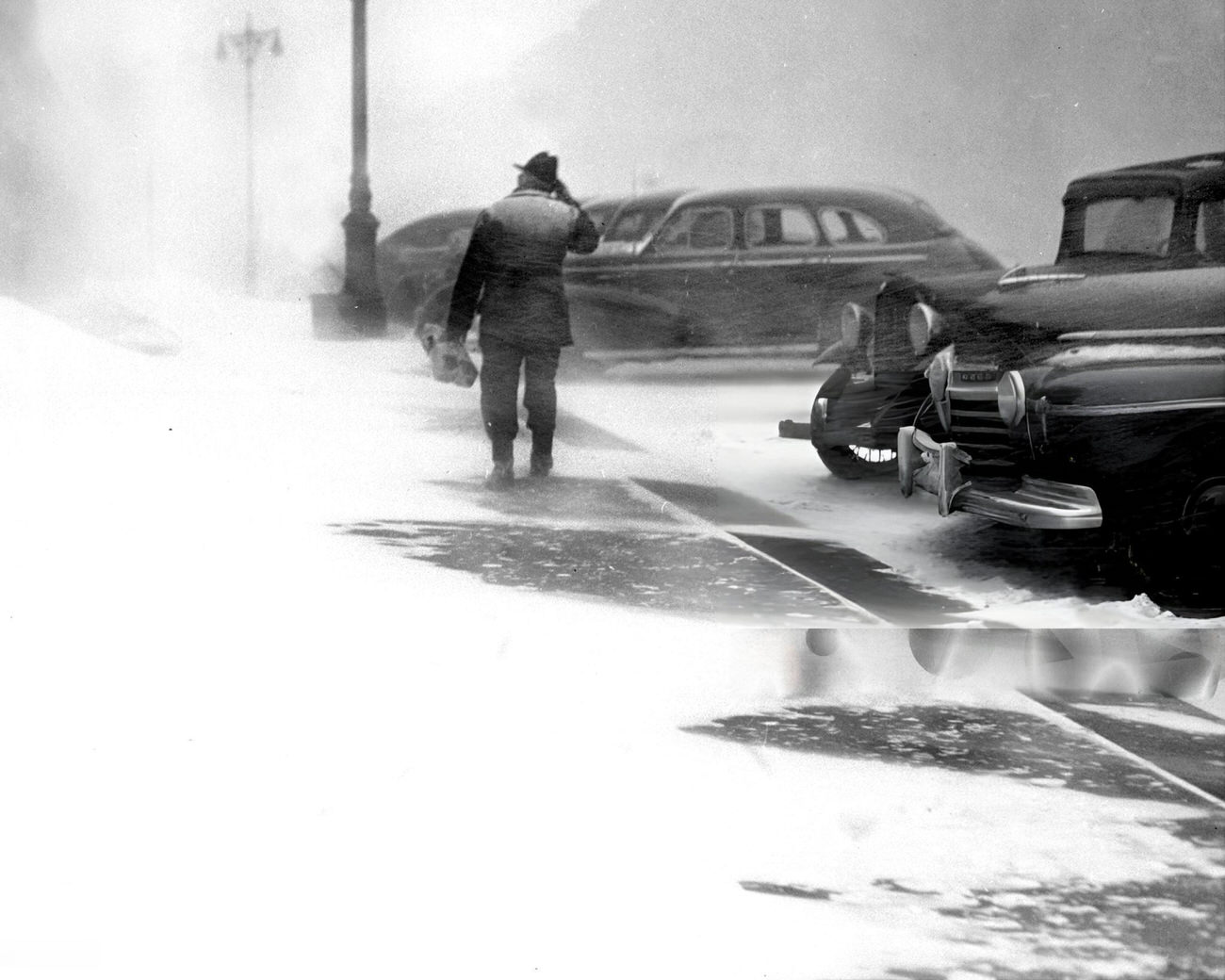
#9 Alexander’s Department Store at the shopping center junction of Fordham Road in the Bronx, 1940s.
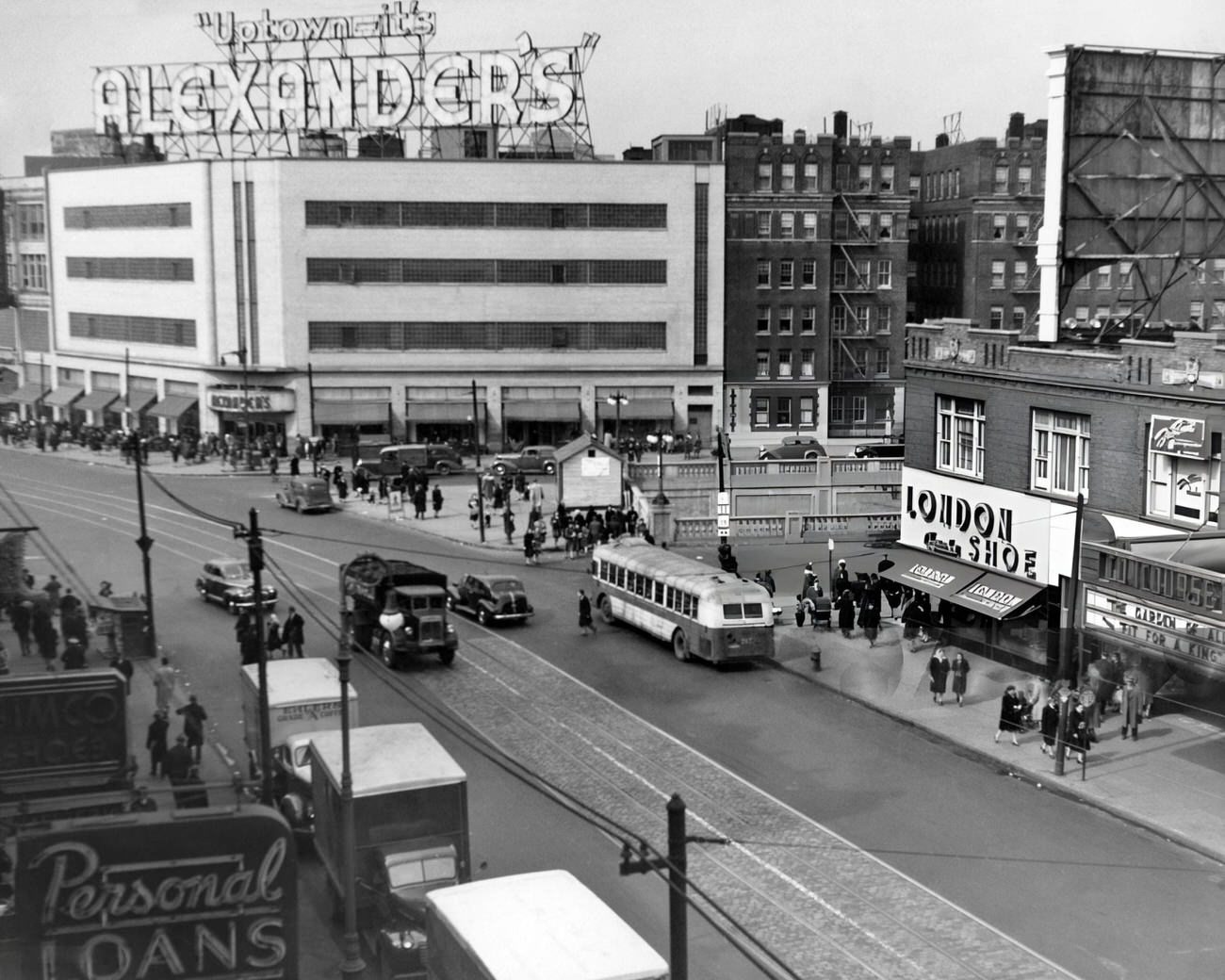
#10 The conservatory at the New York Botanical Garden in Bronx Park, renamed the Enid A Haupt Conservatory, circa 1946.
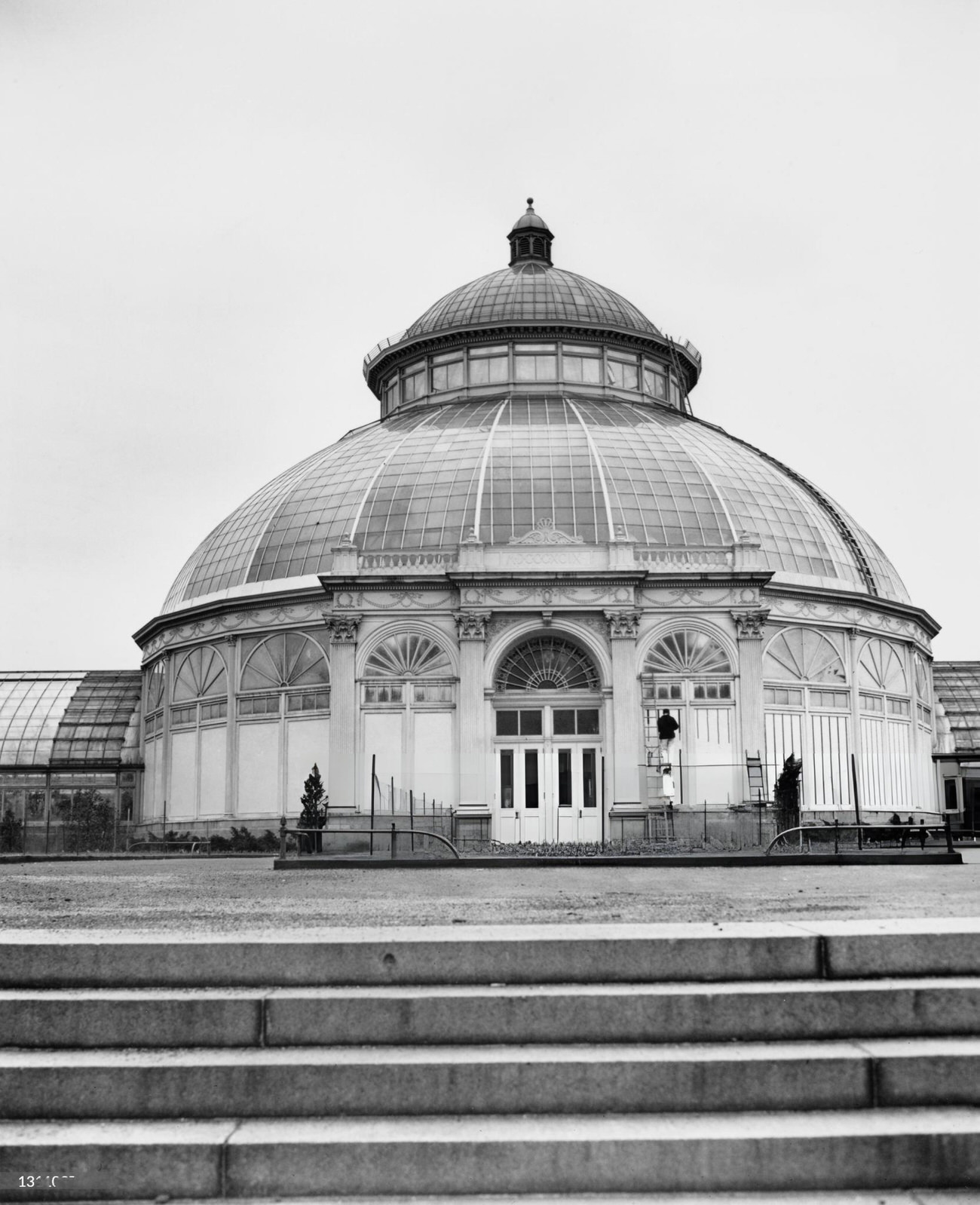
#11 A description of the Grand Concourse in the Bronx as an impressive thoroughfare, 1946.
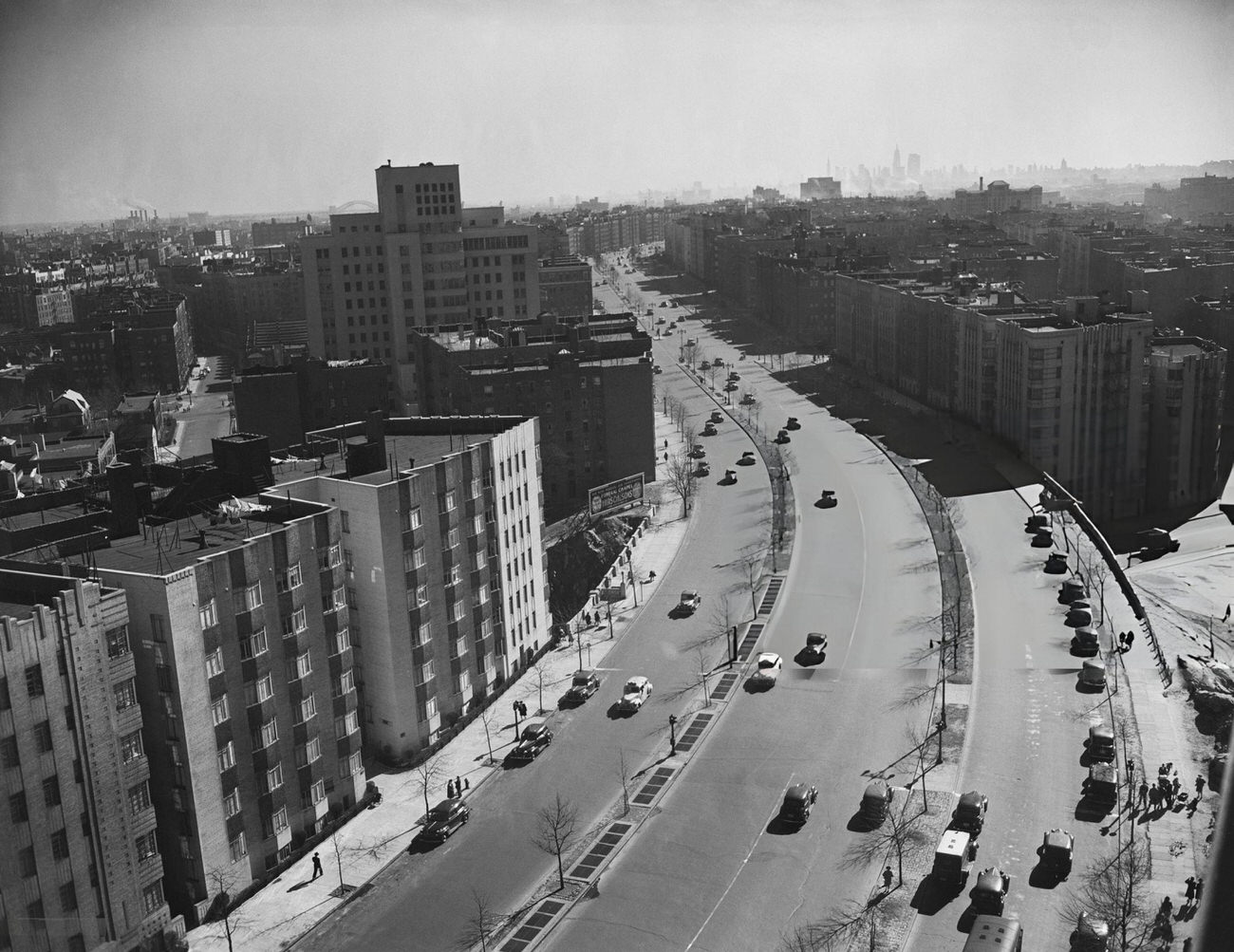
#12 The scoreboard and bleachers of Yankee Stadium shortly after its completion in June 1946.
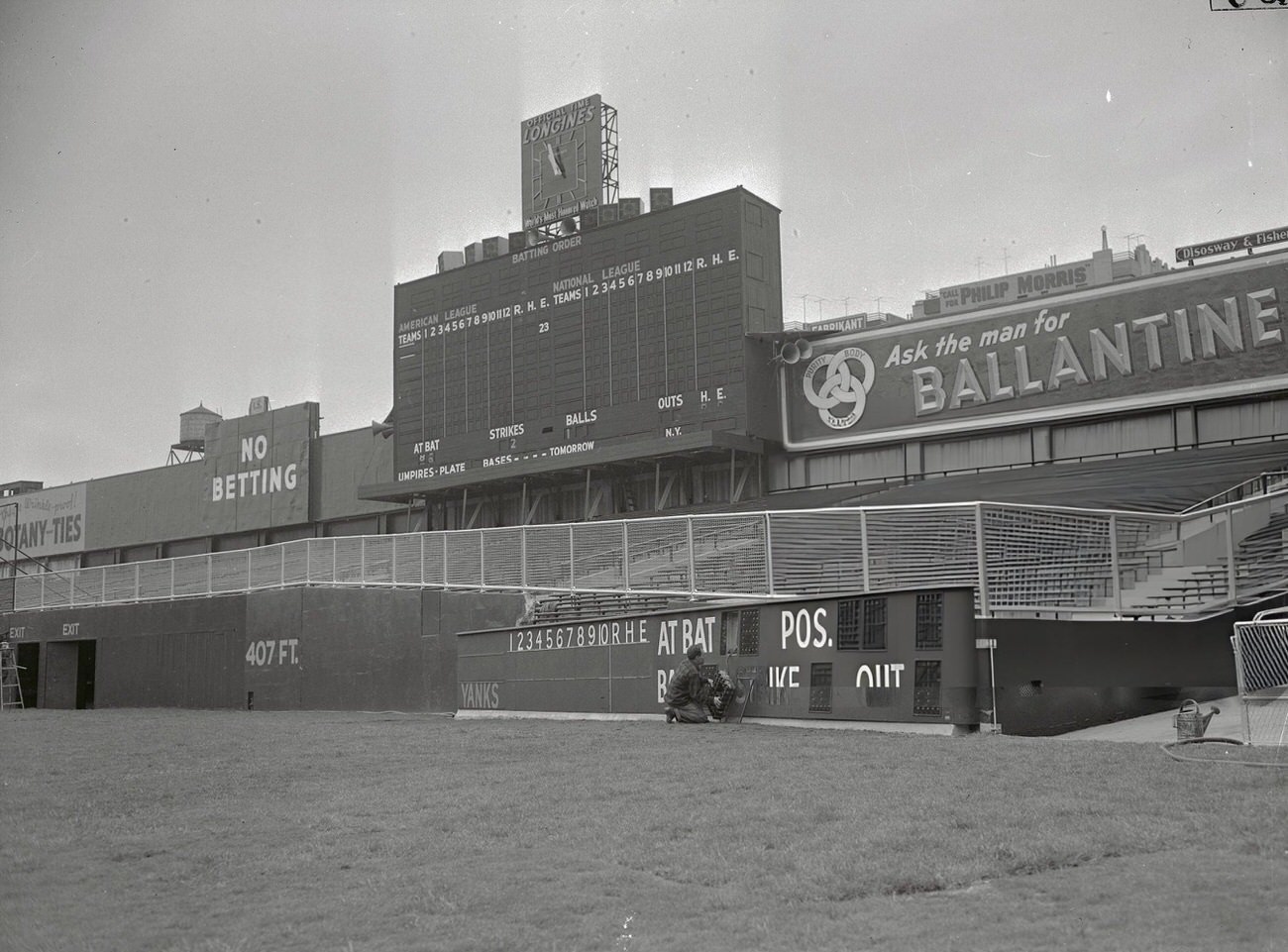
#13 A snowstorm hits the Bronx, circa 1947.
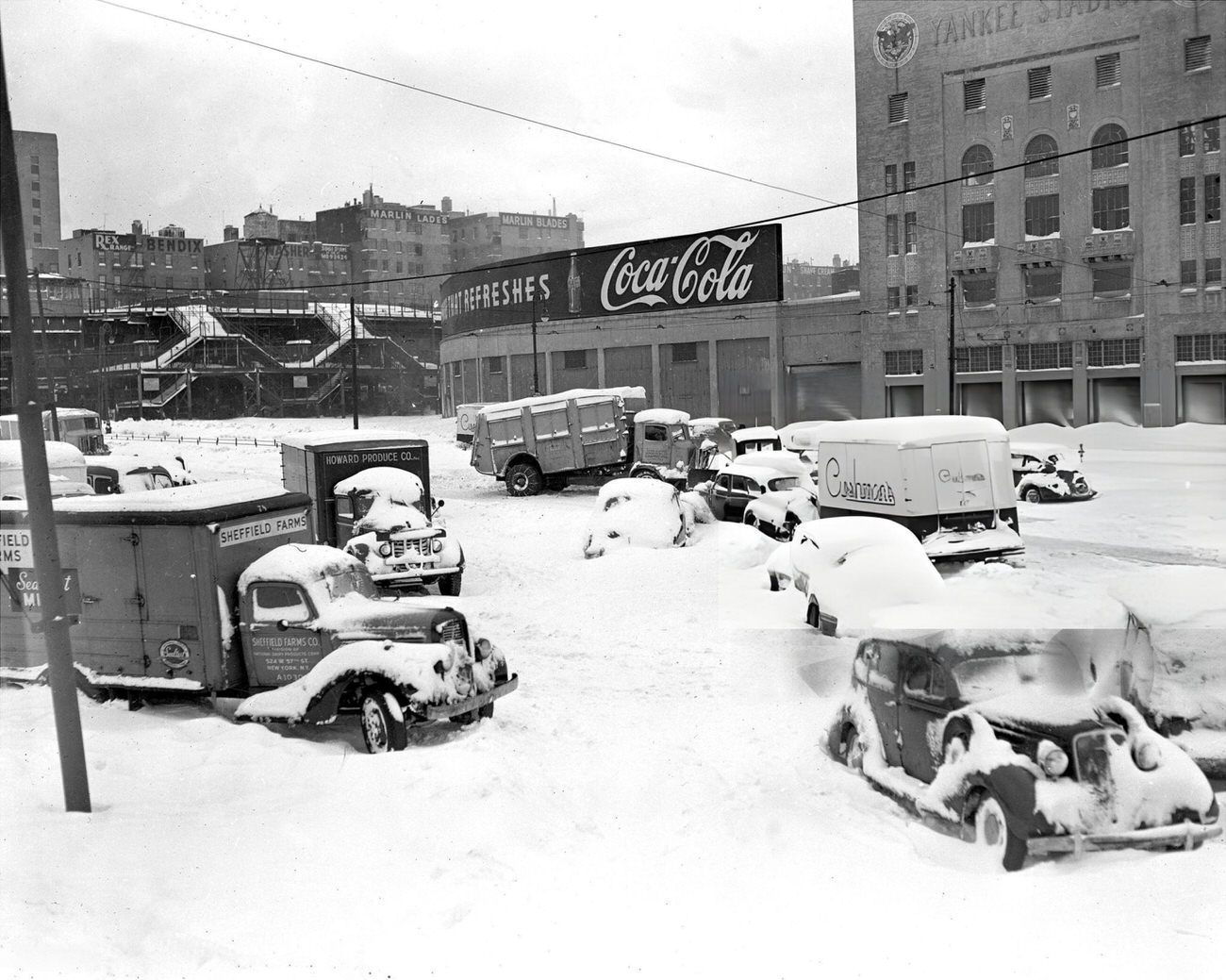
#14 New Yorkers line up for smallpox vaccinations at Morrisania Hospital on 167th Street and Gerard Avenue in the Bronx, April 1947.
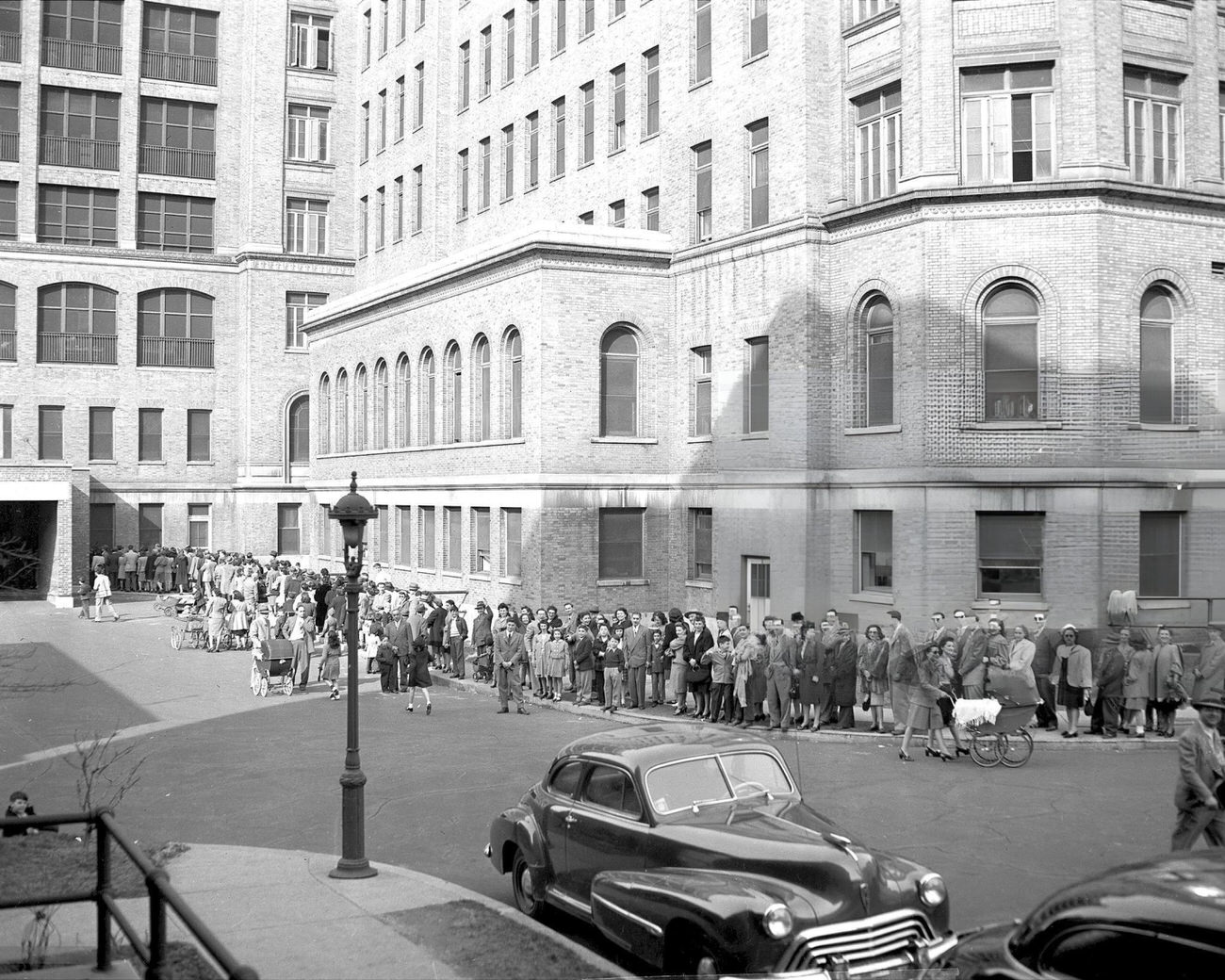
#15 Joe Prine ensures his spot at the front of the line for World Series bleacher seats, September 18.
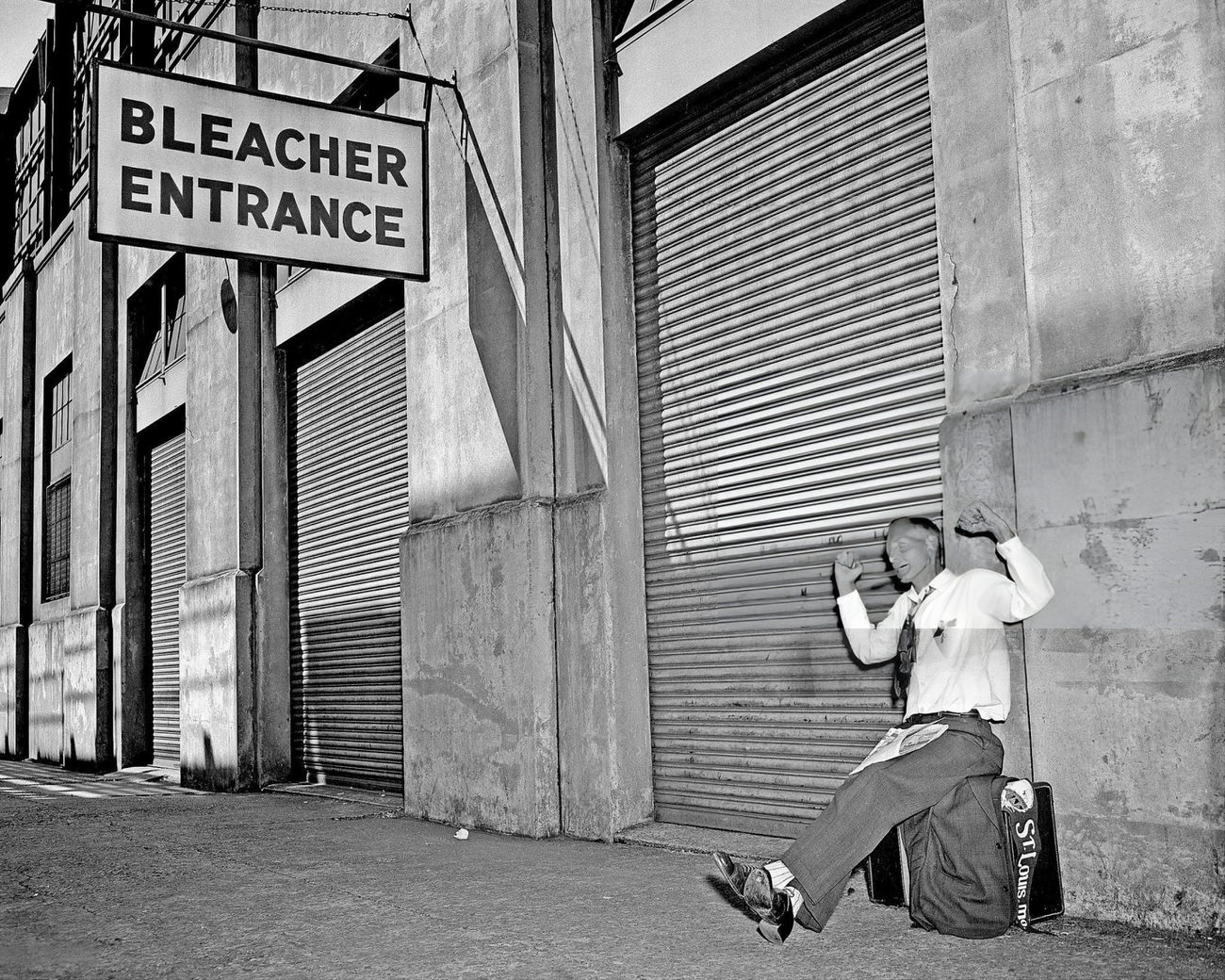
#16 Drivers struggle to find the Boston Post Road under a blanket of snow, 1940s
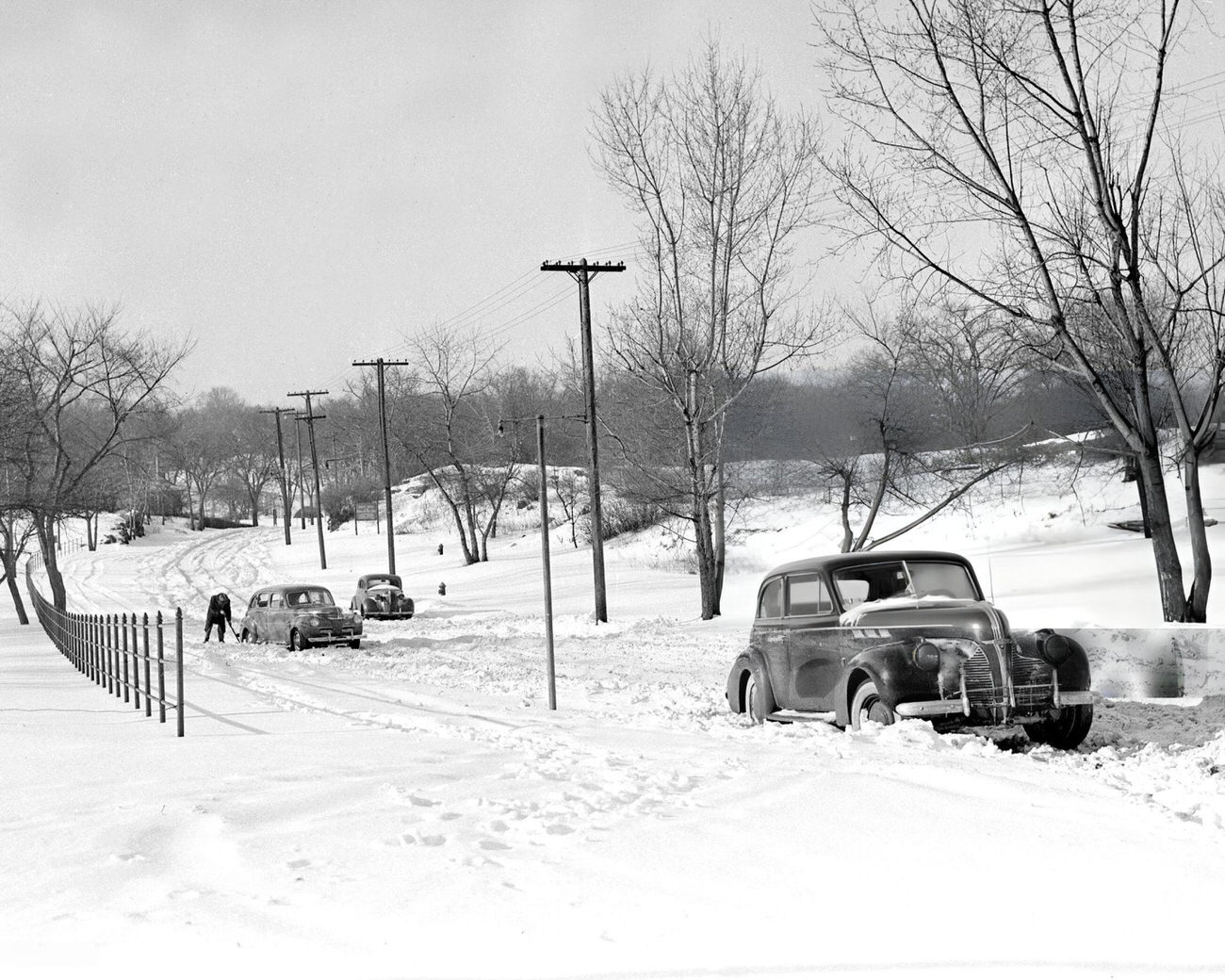
#17 New Yorkers queue for potatoes at a special sale by Hearn’s at 149th St. and Third Ave. in the Bronx, 1943.
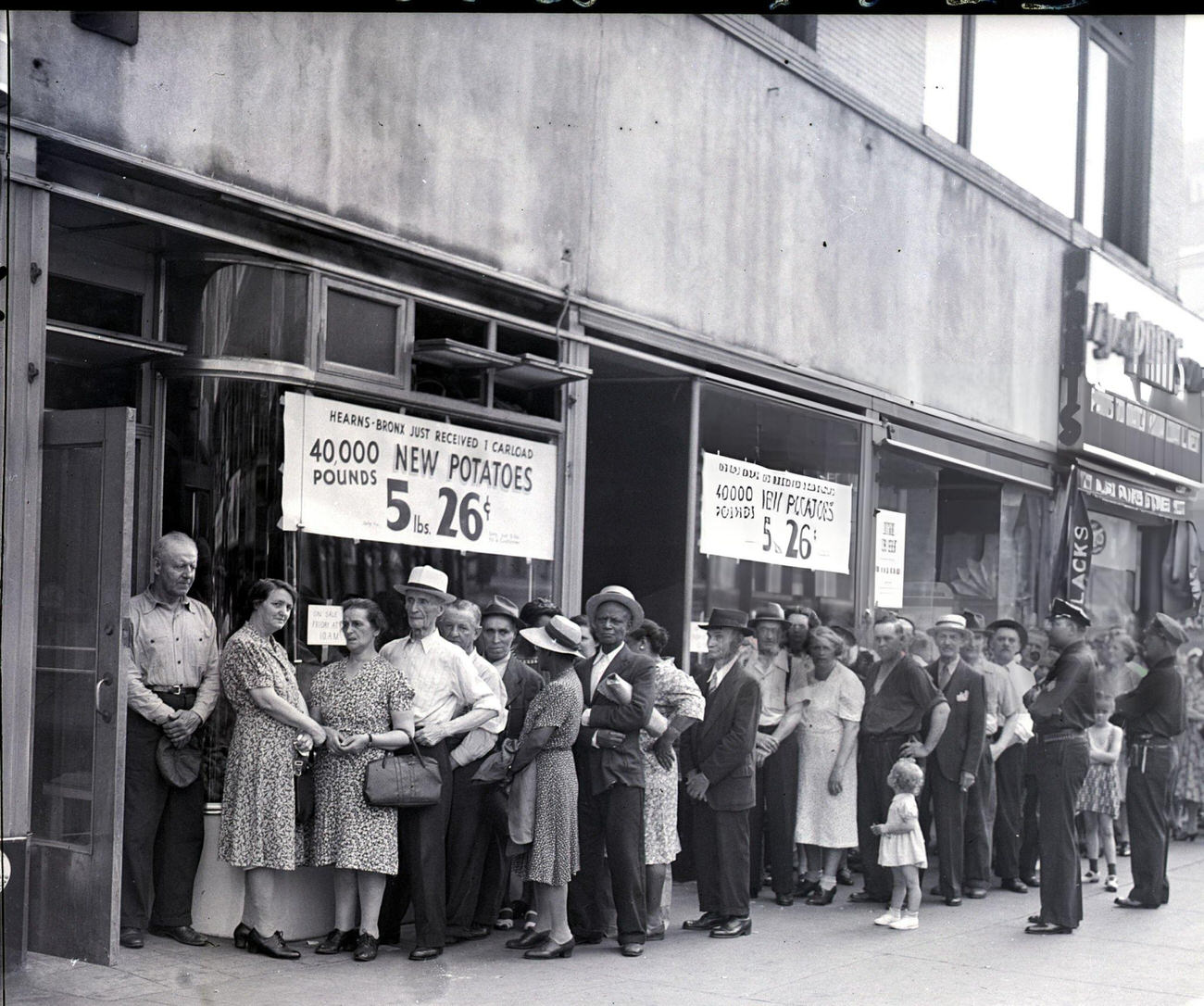
#18 Anti-Semitic graffiti during the US presidential campaign of 1944 on the H Jaffess Tire Company shop in the Bronx.
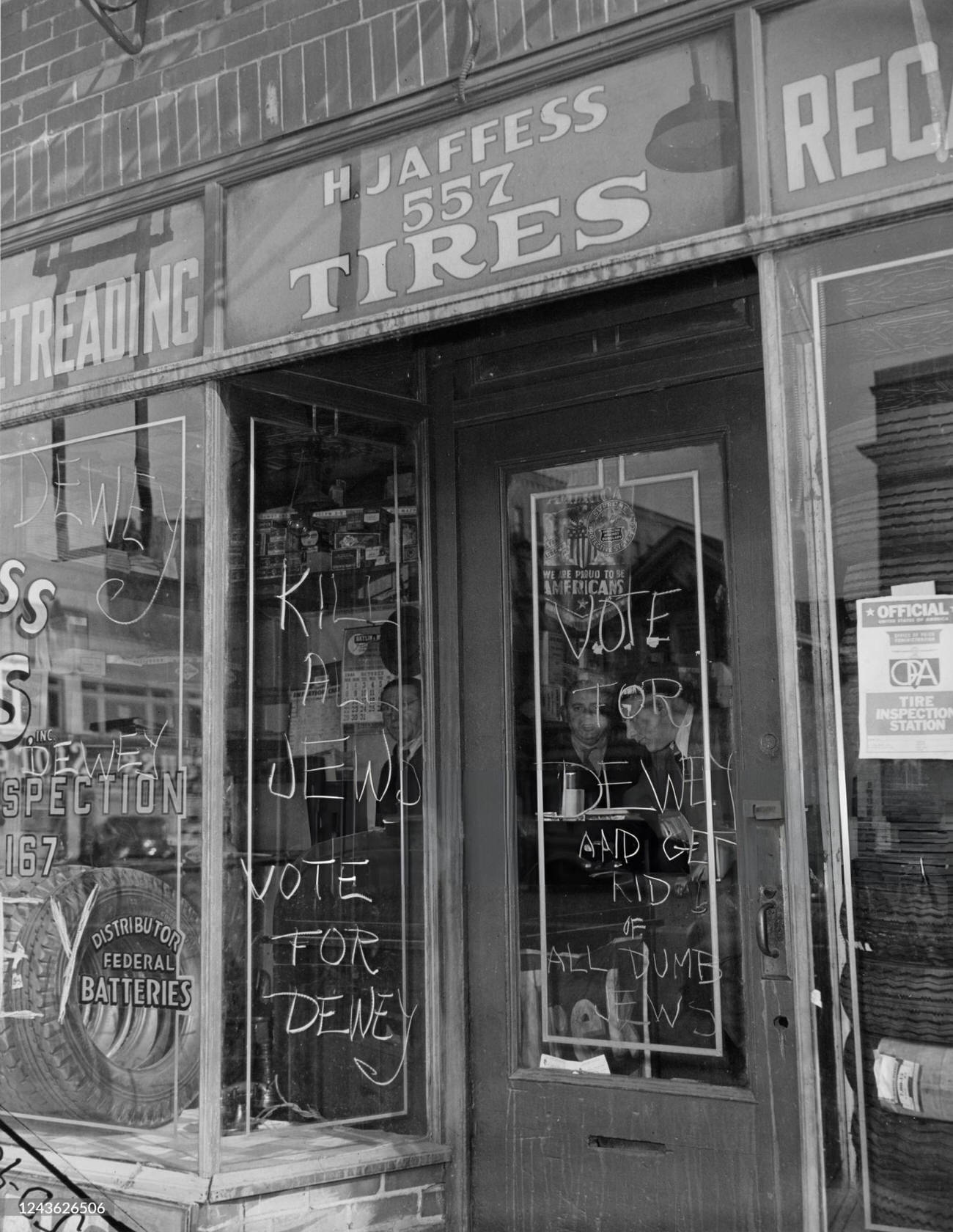
#19 A cold April day captured on Pelham Parkway in the Bronx, looking toward Fordham Road, 1940s
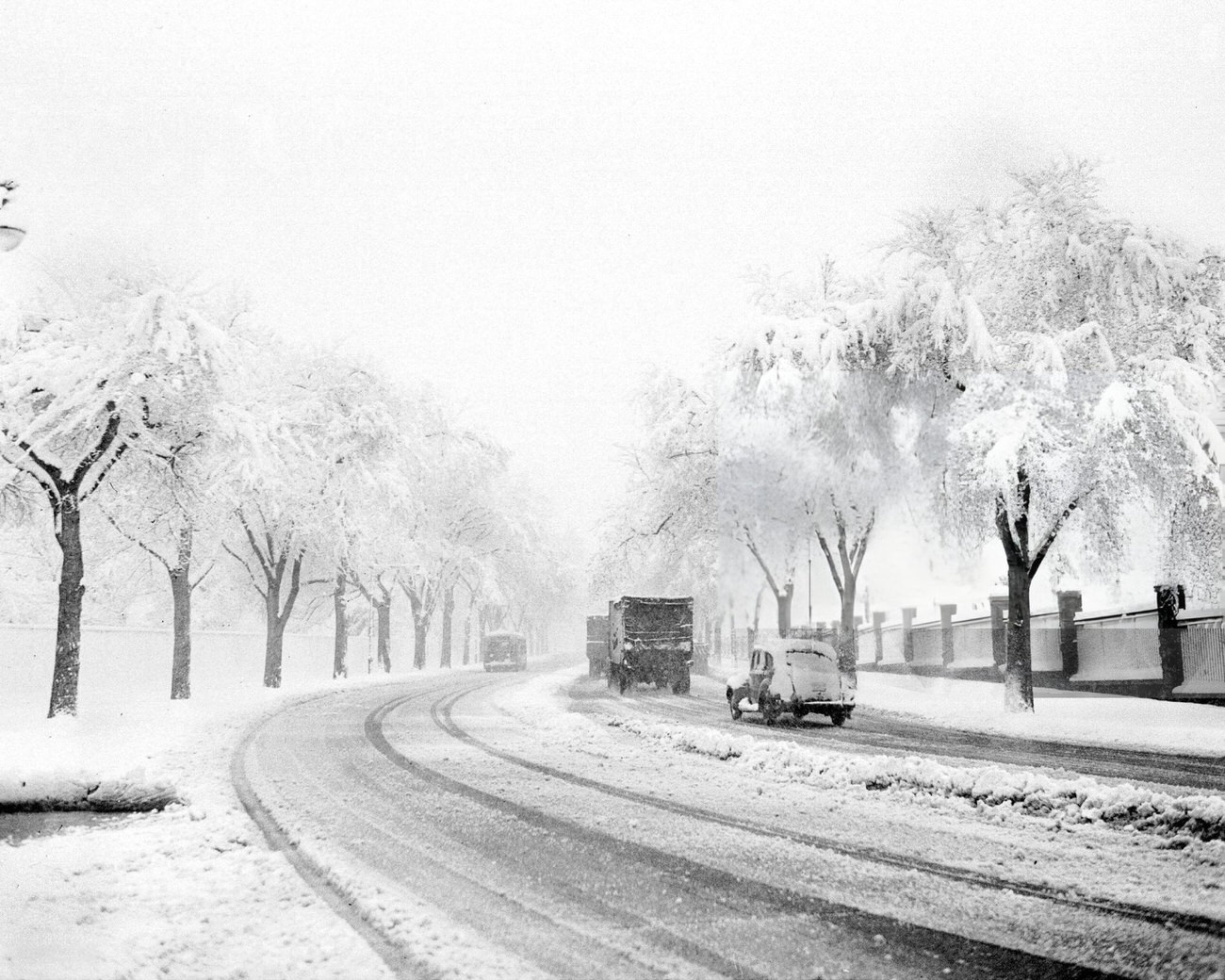
#20 A snow-covered footbridge over the Bronx River at Burke Avenue, 1940s

#21 The CBS television program “Missus Goes A-Shopping” features Pierre the duck from the Bronx Zoo, 1944.
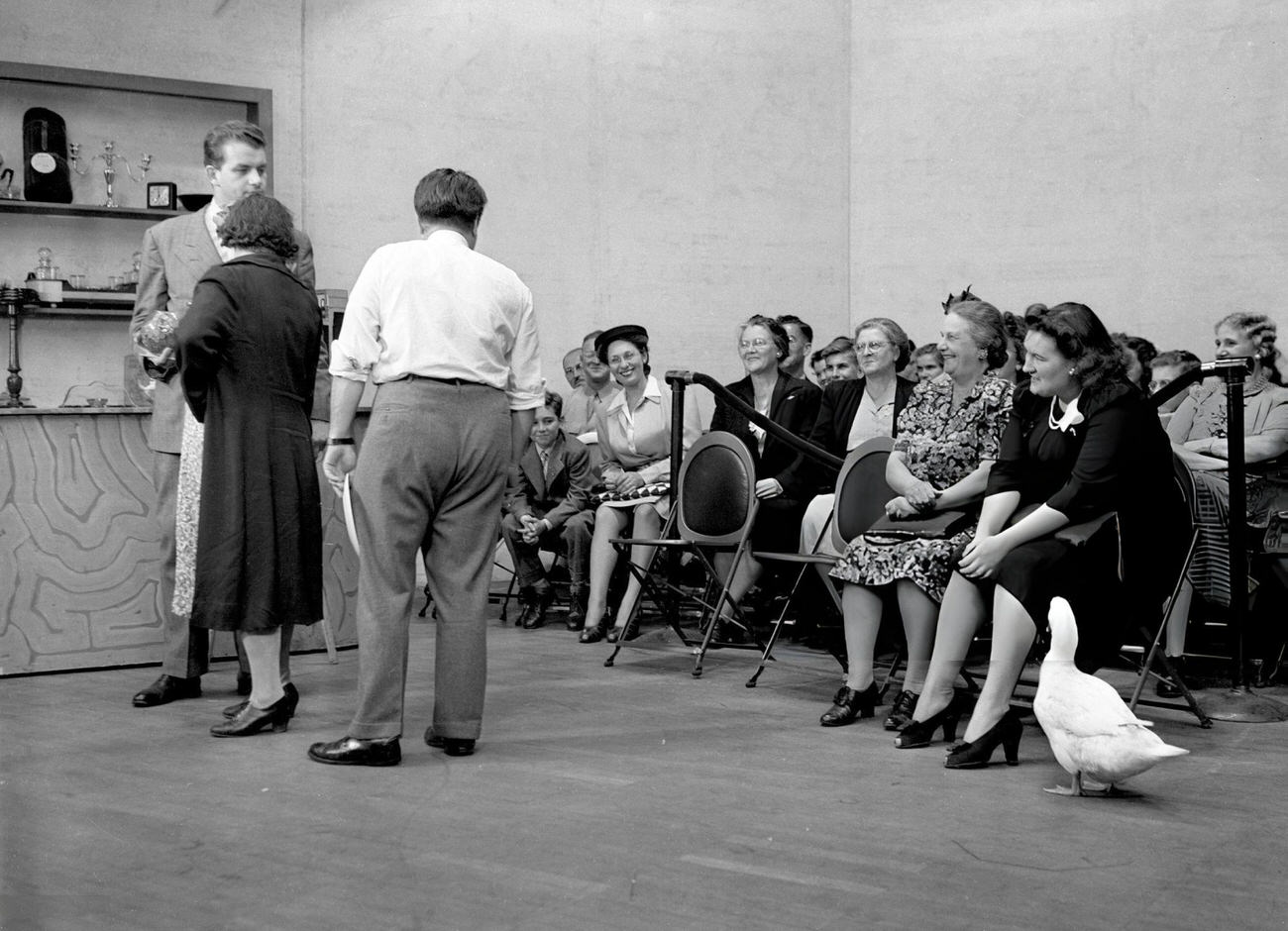
#22 High-angle view of Parkchester, showing apartment buildings and landscaped grounds in the Bronx, circa 1942.
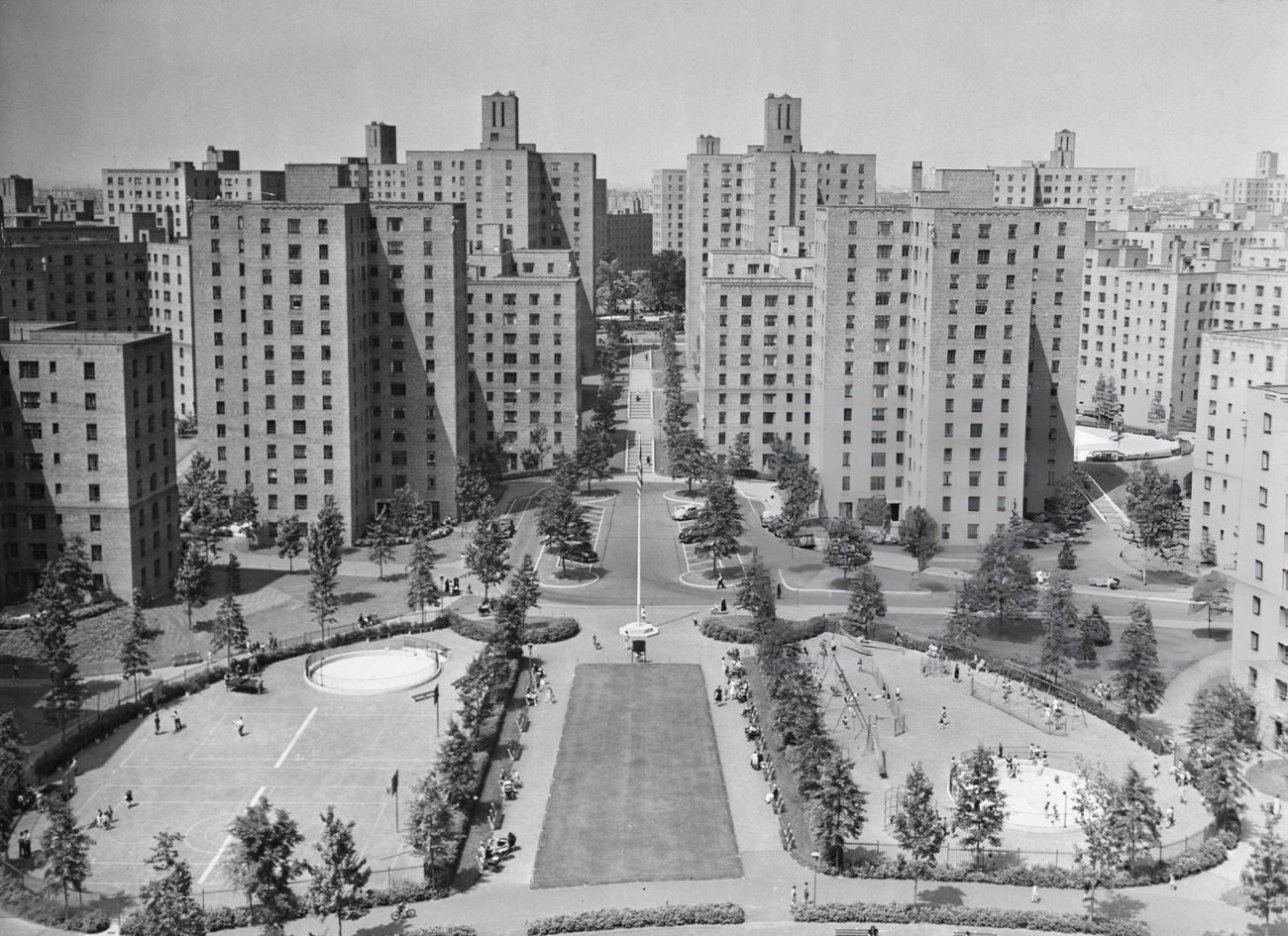
#23 A taxi and car trapped in snowdrifts on a ramp leading into Hutchinson River Parkway, 1940s

#24 Aerial view of New York City including Brooklyn, the Bronx, Queens, and Manhattan Island, 1940s
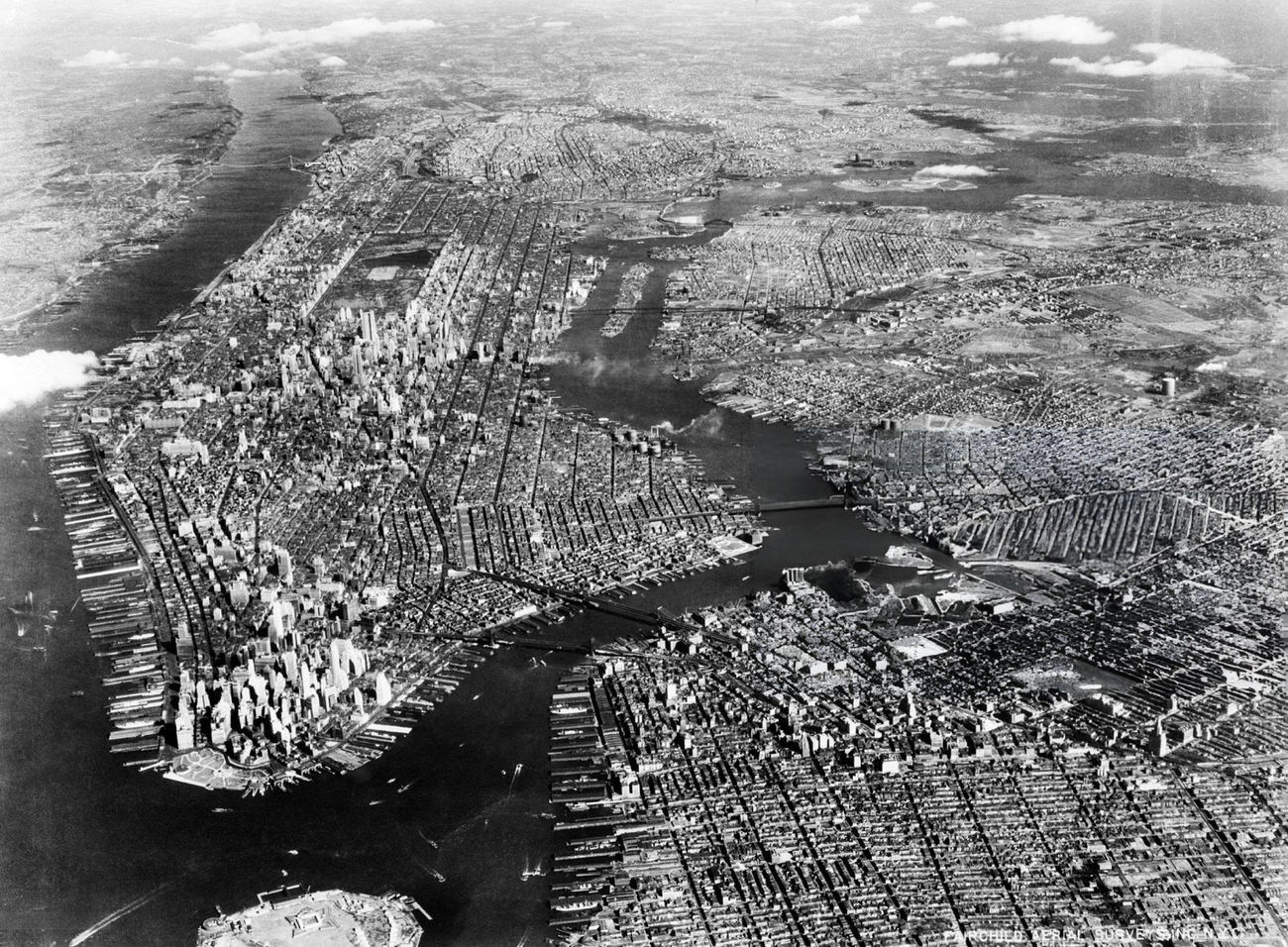
#25 Flooded subway tracks at Longwood Avenue in the Bronx, 1940.
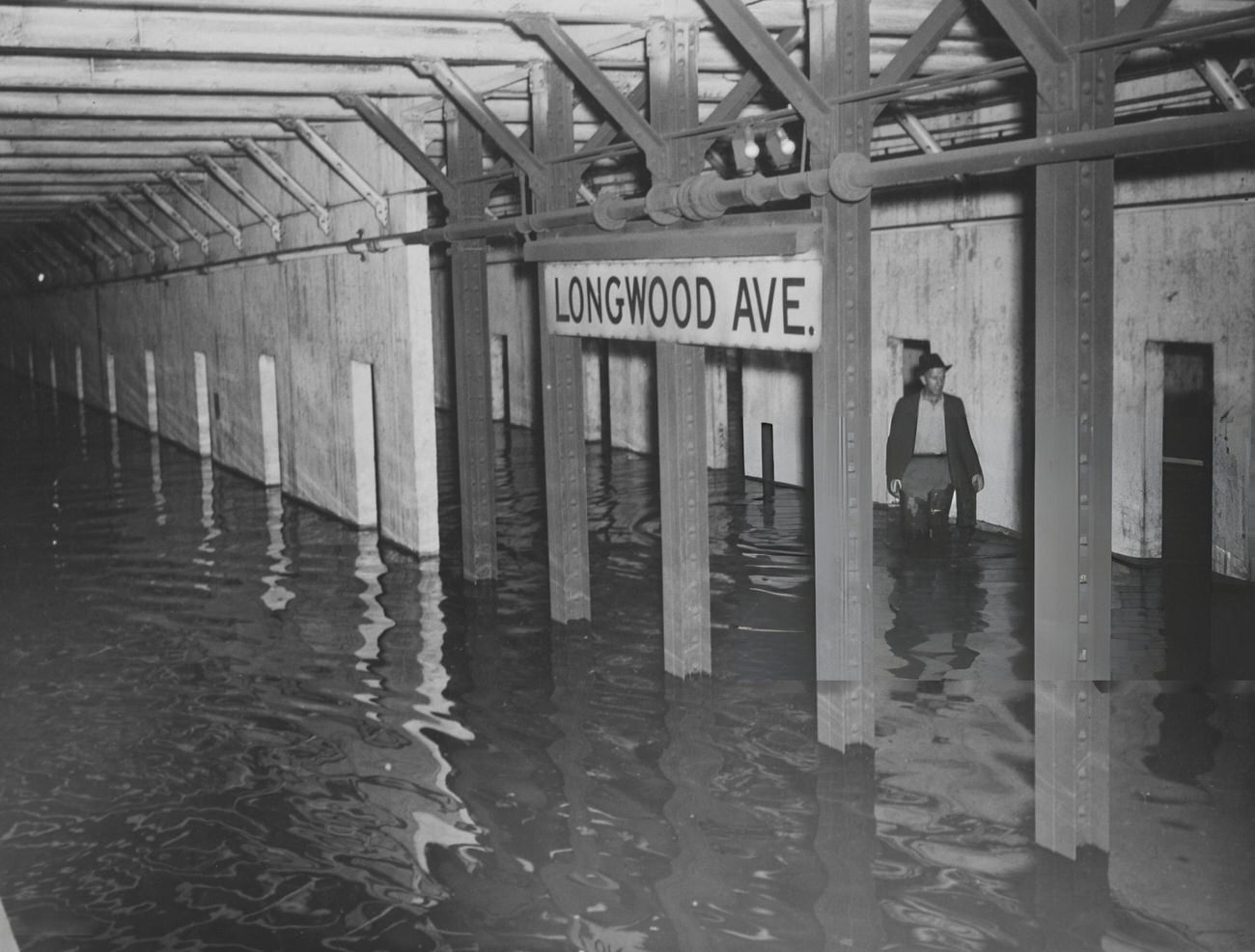
#26 The Bronx Coliseum, known for auto races before World War II, featured a cinder and later board track, New York, 1940.
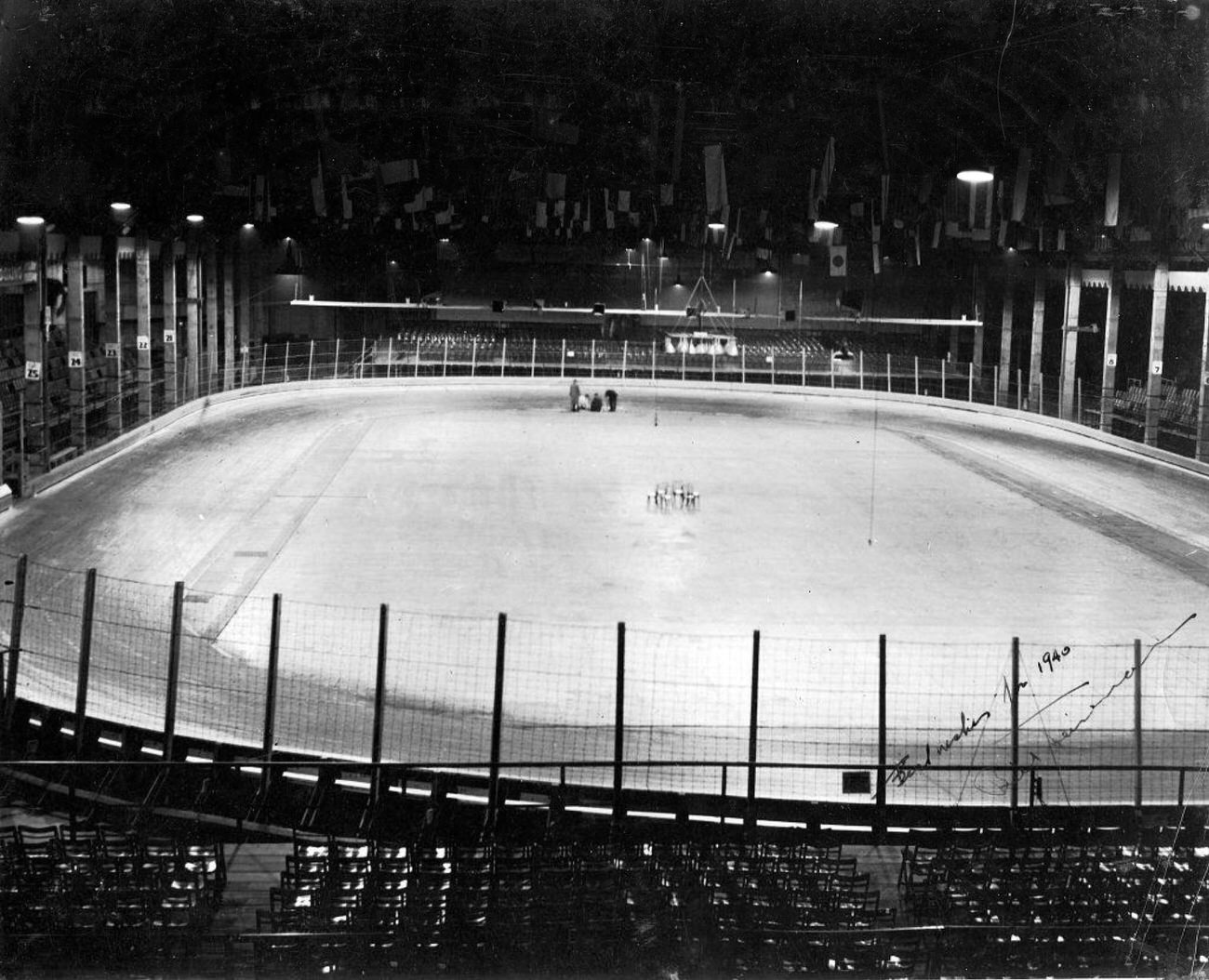
#27 A long line for World Series tickets at Yankee Stadium, 1940s.
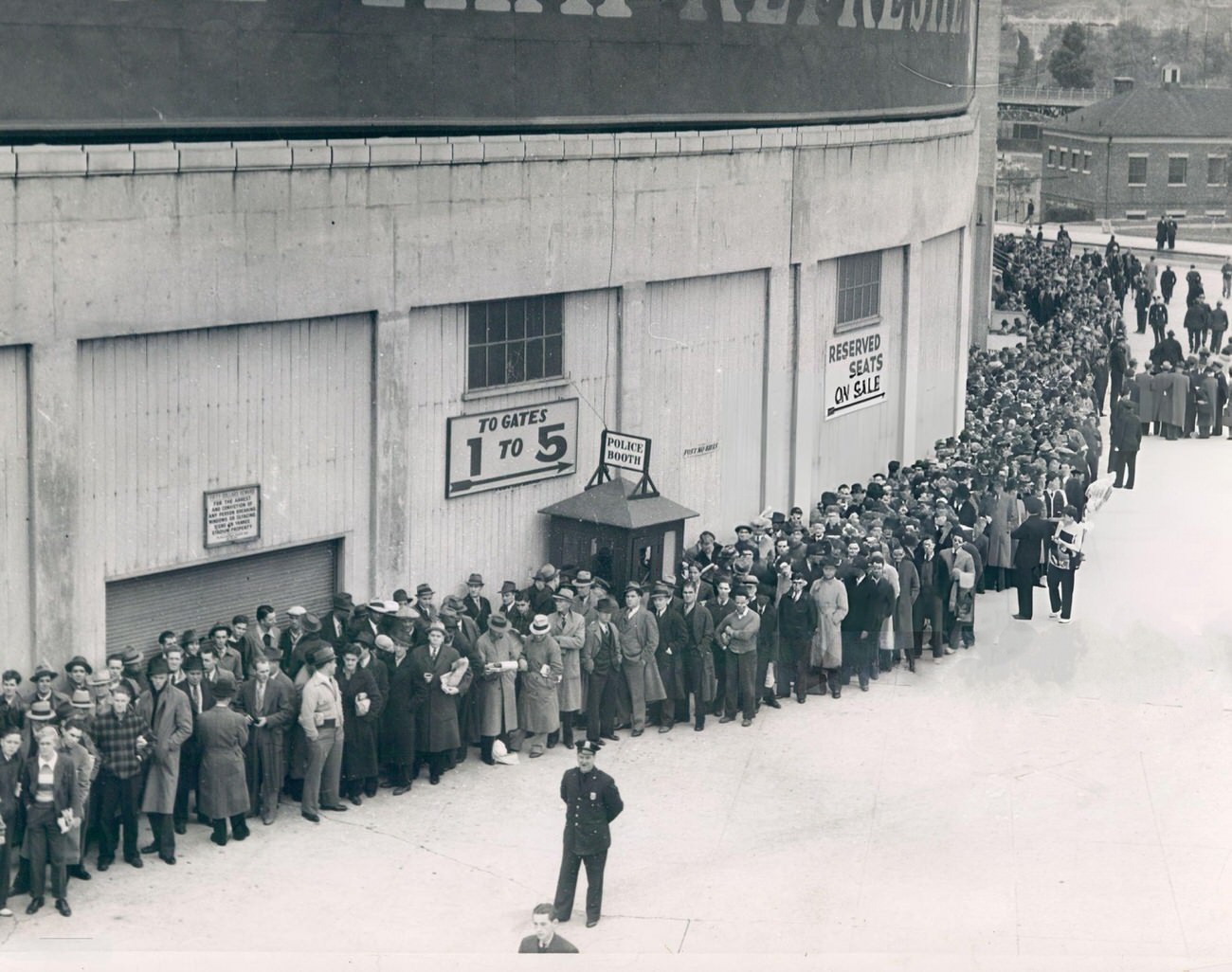
#28 Exterior of Yankee Stadium with a Coca-Cola banner, showing a tree-lined street 1940s.
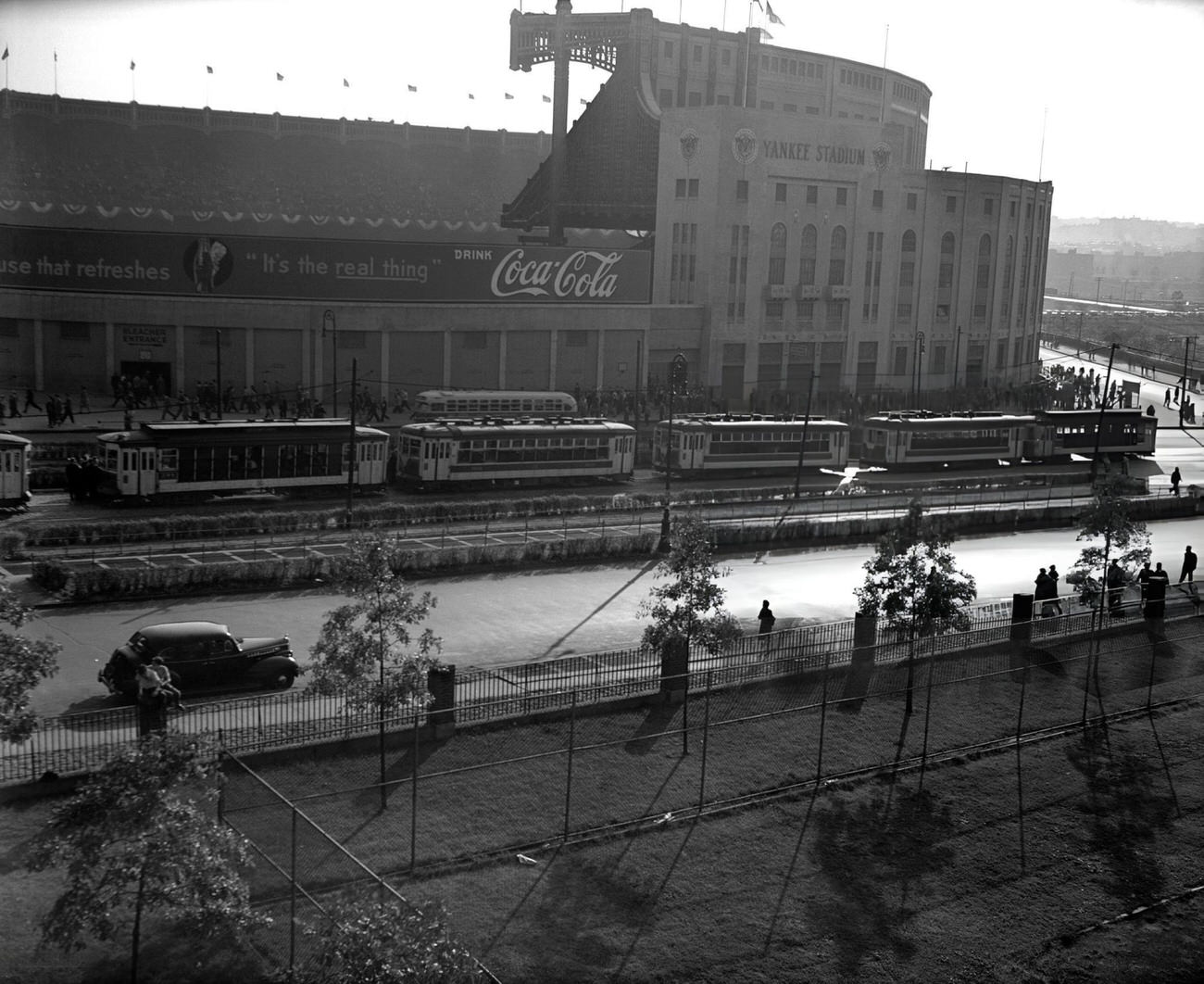
#29 Women and children crossing a street in the Bronx, 1940s.
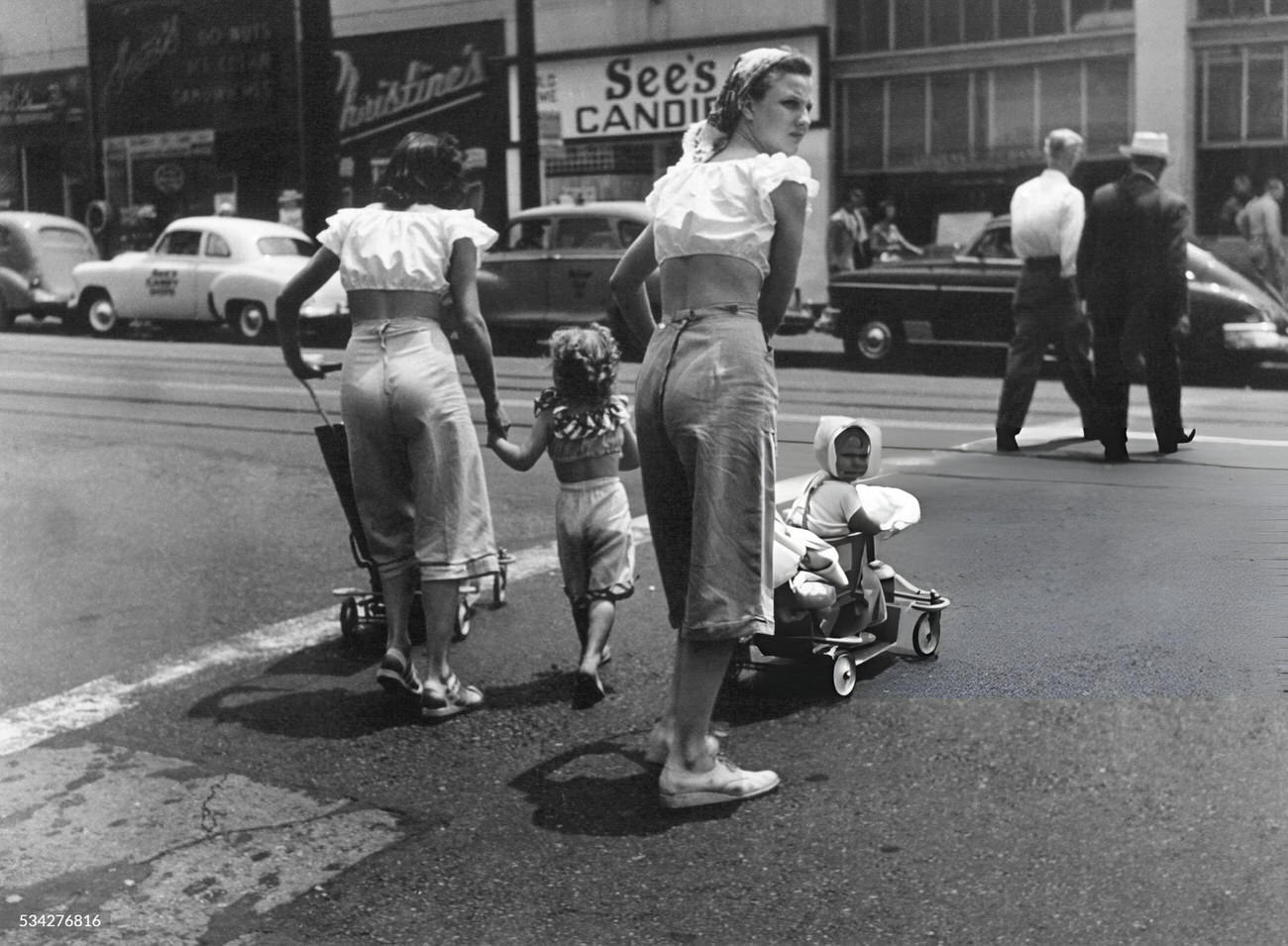
#30 A baseball game between the Yankees and Washington Senators at Yankee Stadium, 1940.
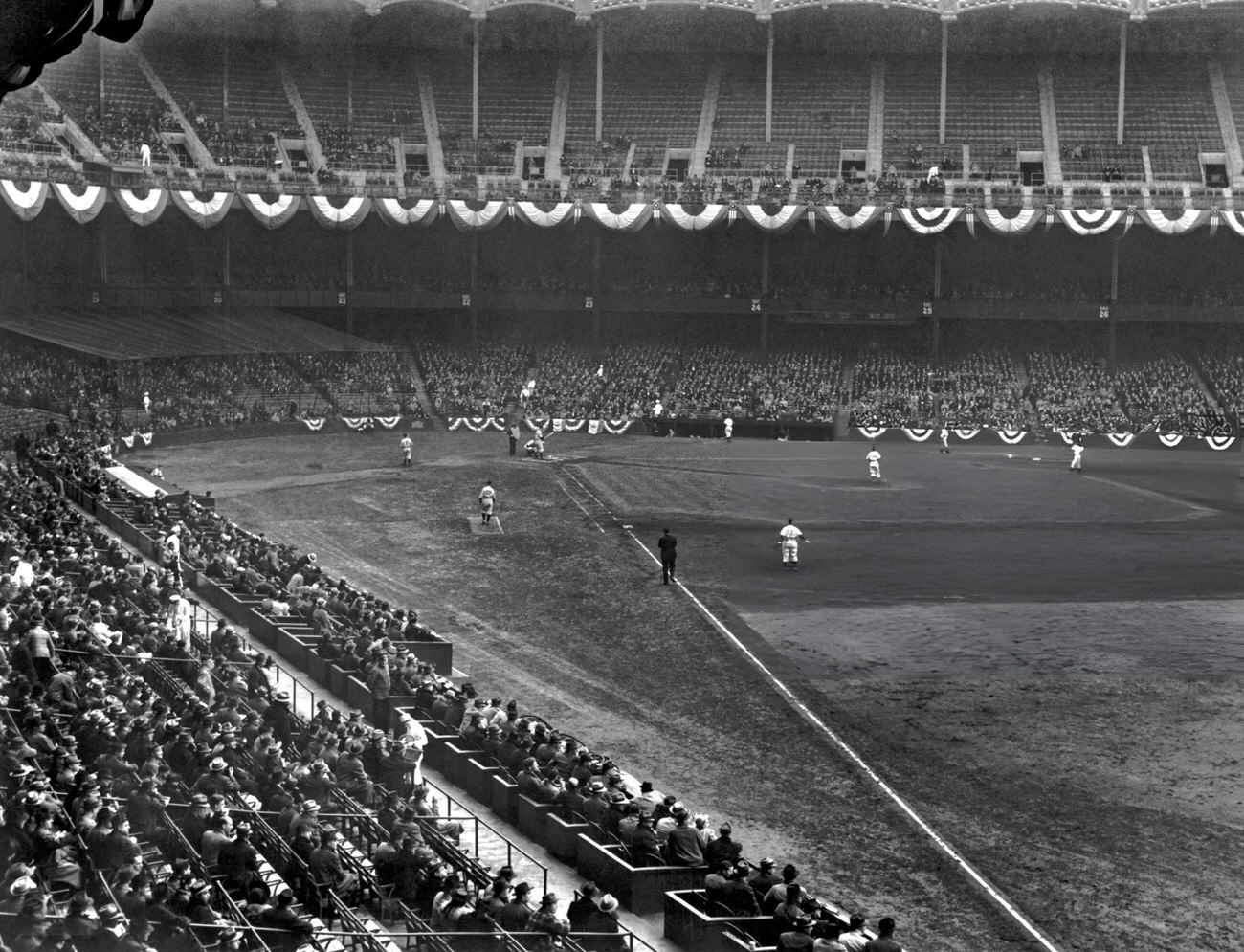
#31 Fish being unloaded at Fulton Fish Market in the Bronx, 1940.
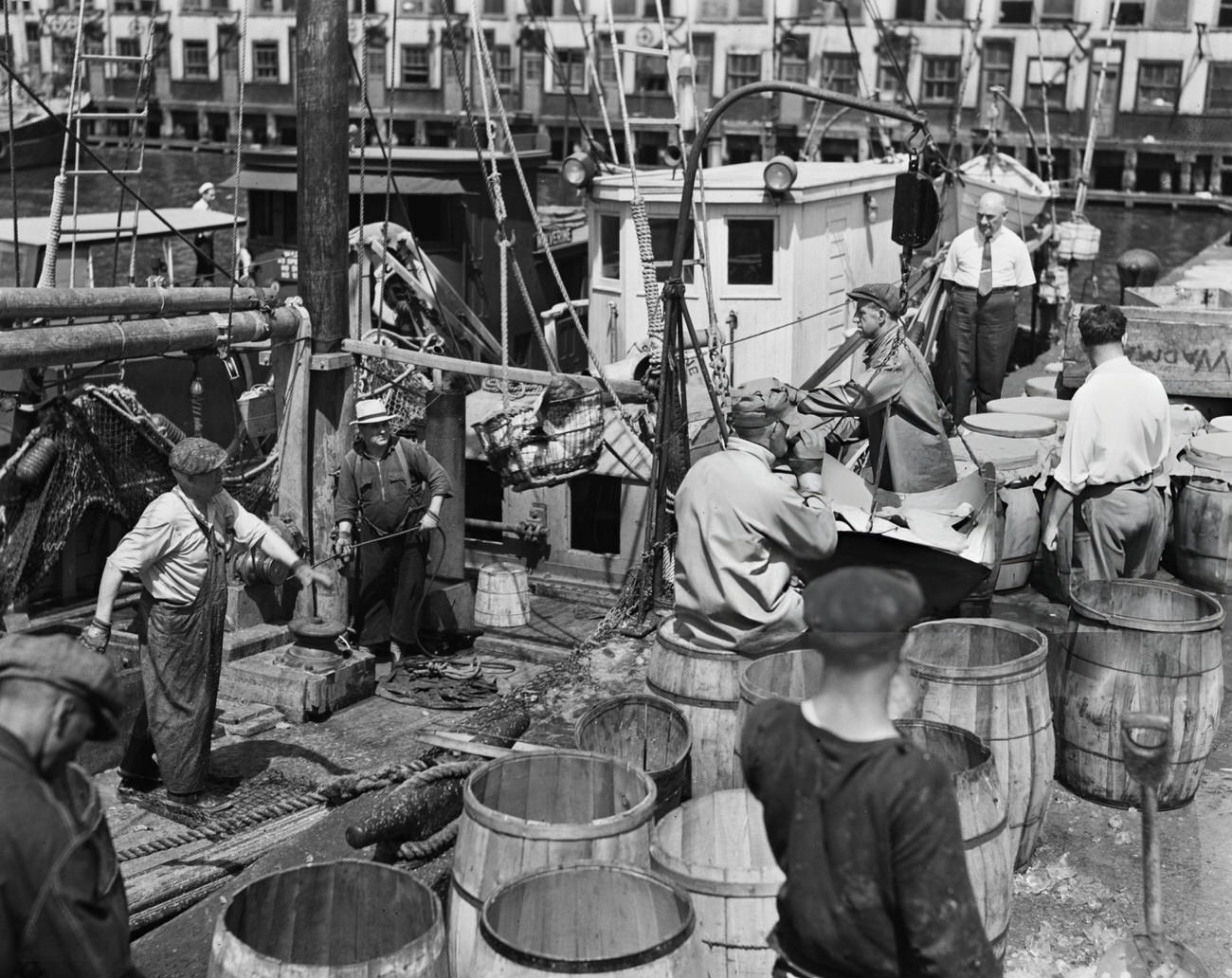
#32 Police Commissioner Valentine orders seizure of pinball machines in New York as gambling devices.
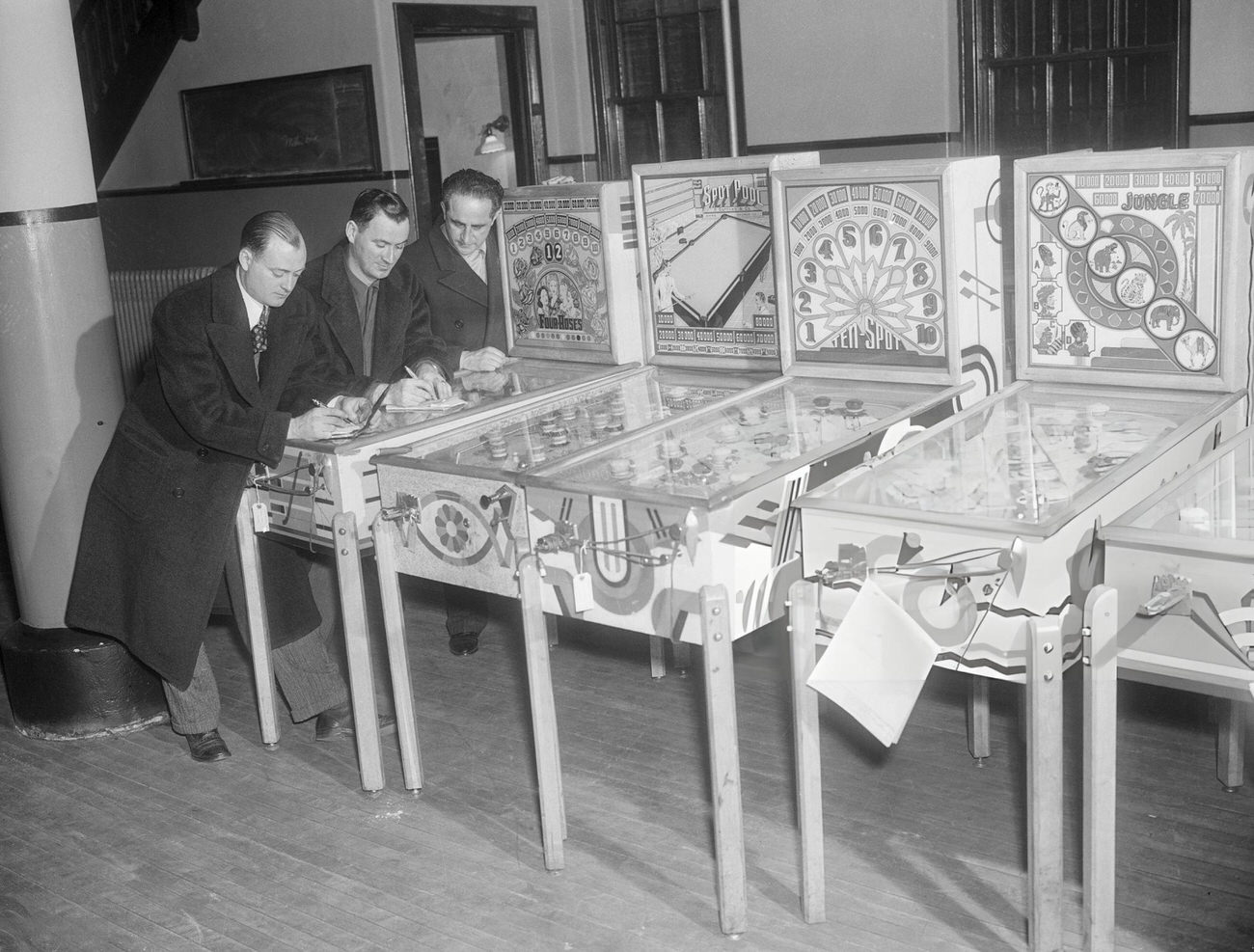
#33 Fans line up outside Yankee Stadium to pay respects to Babe Ruth, lying in state, August 1948.
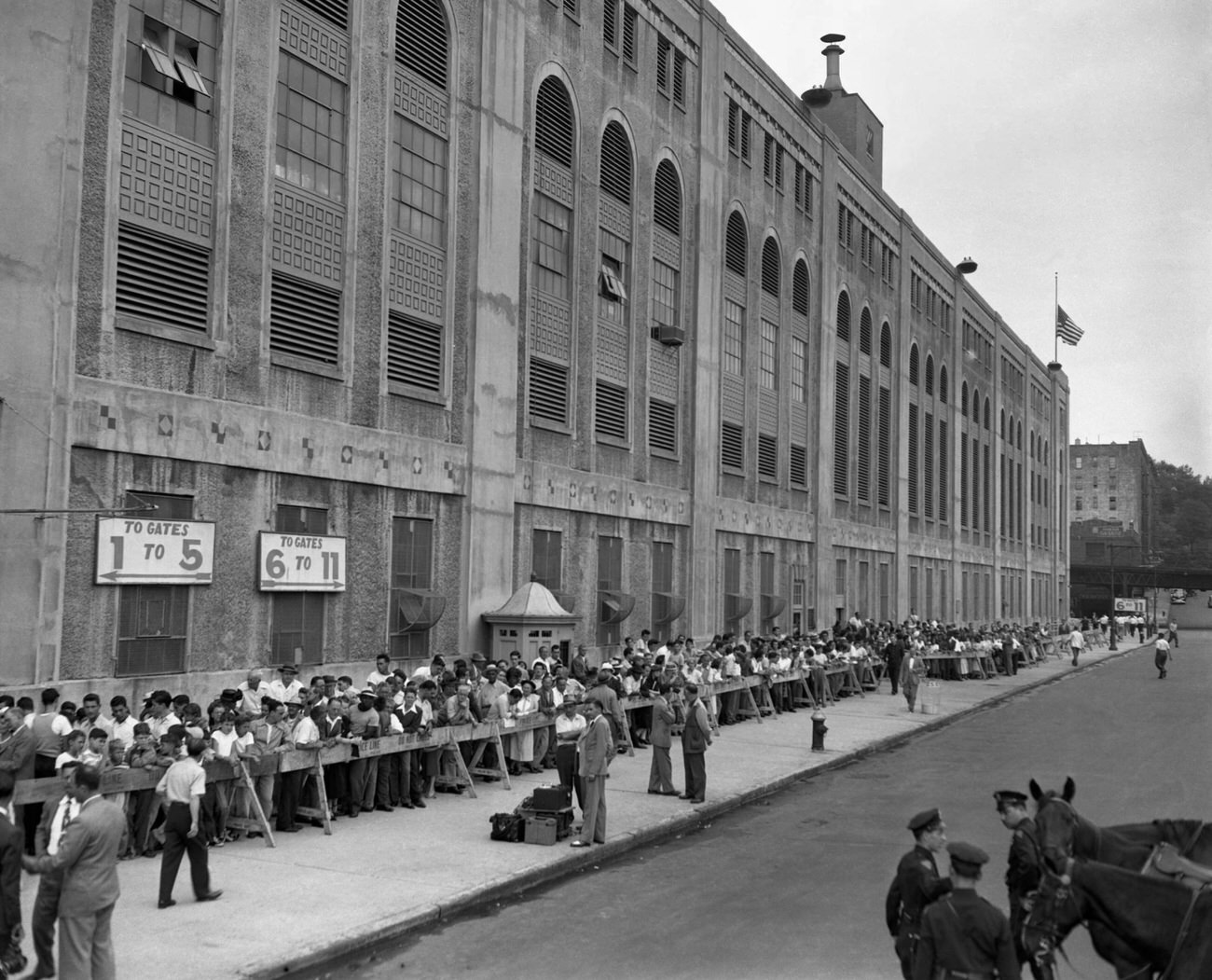
#34 Youngsters too young to have seen Babe Ruth play pay their respects outside Yankee Stadium, 1940s
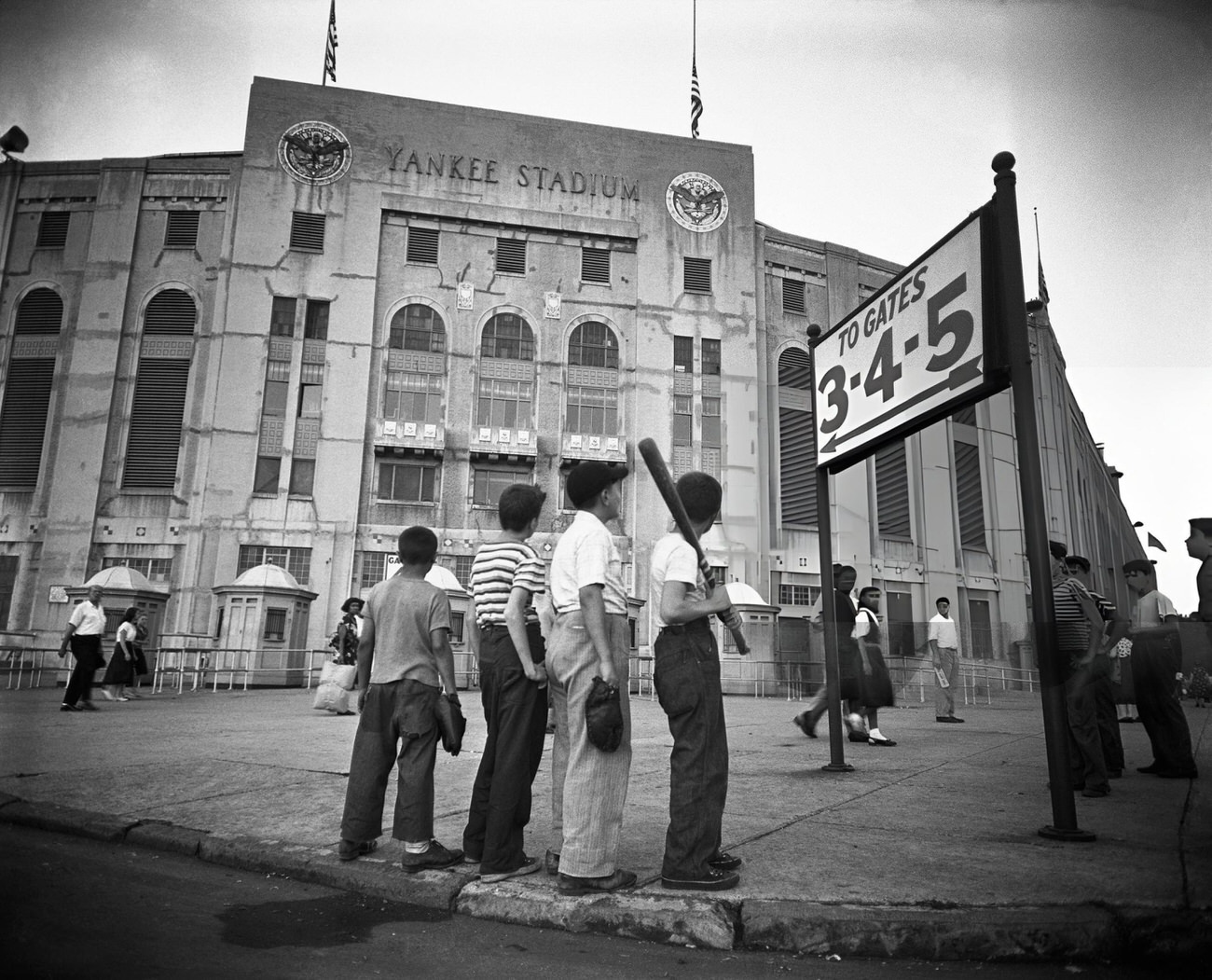
#35 Mourners line up outside Yankee Stadium to pay their last respects to Babe Ruth, 1940s
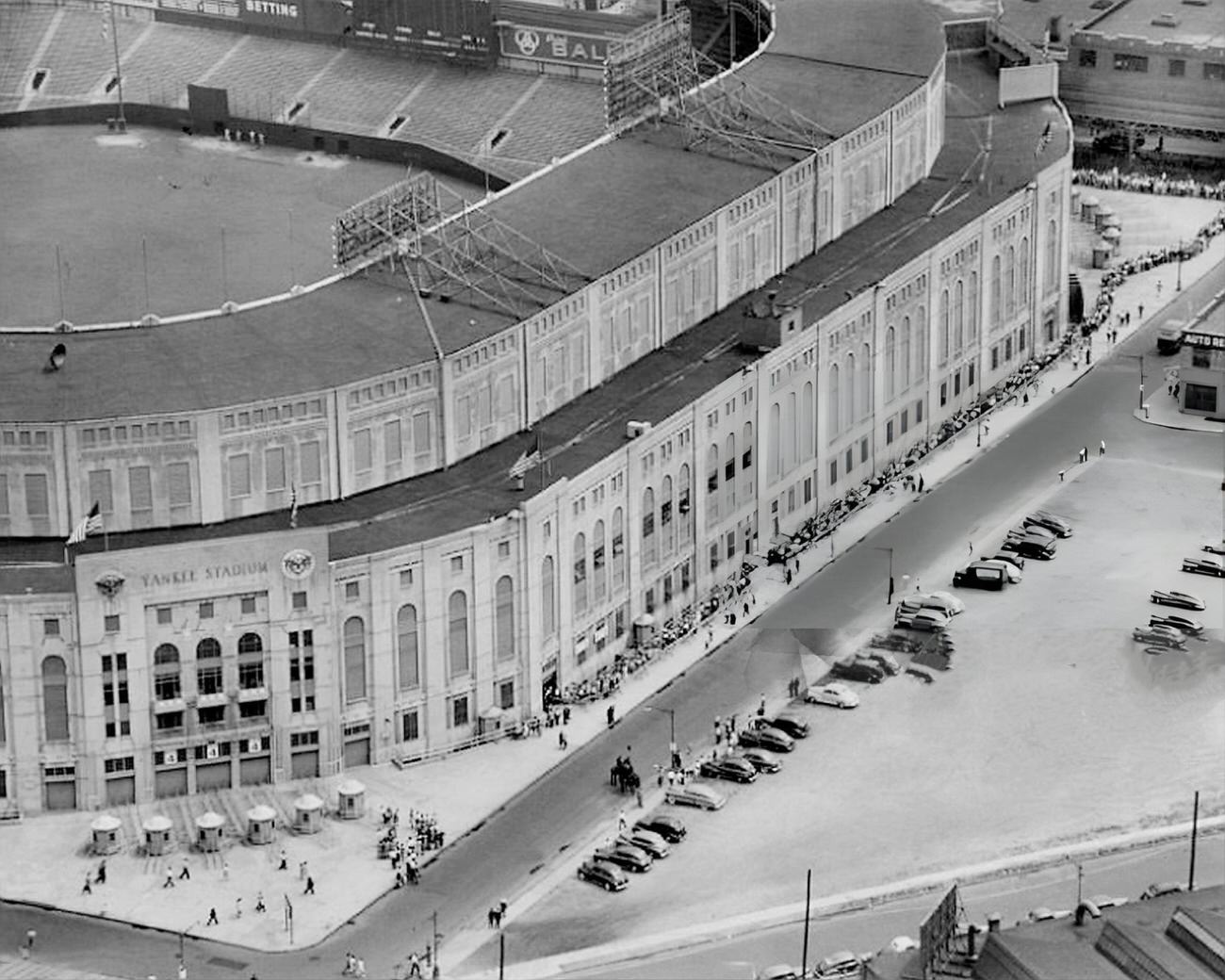
#36 A shopkeeper in his shoe sales and repair shop in the East Bronx, 1948.
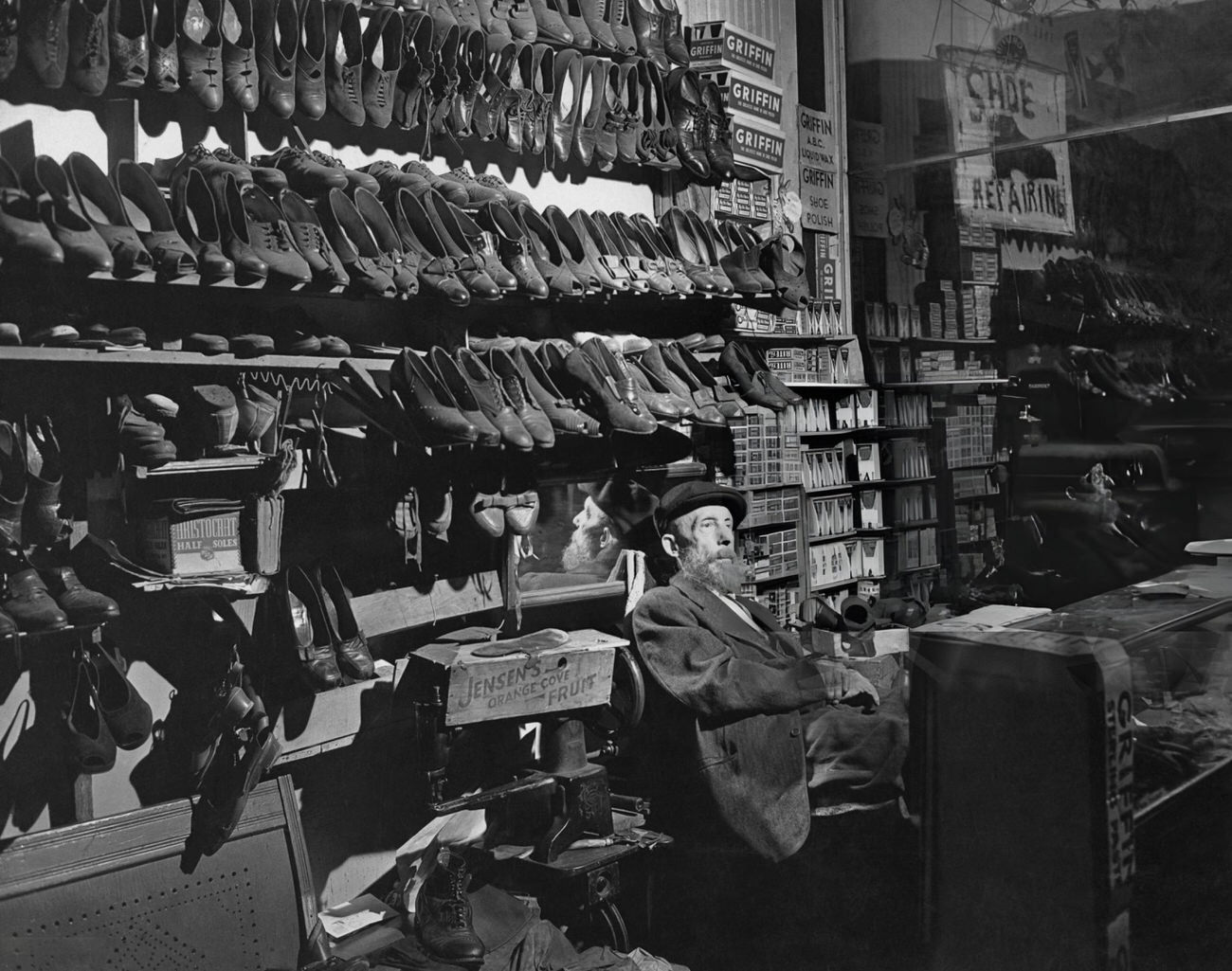
#37 View of the Edgar Allan Poe Cottage in the Bronx, where Poe lived from 1846 to 1849, circa 1949.
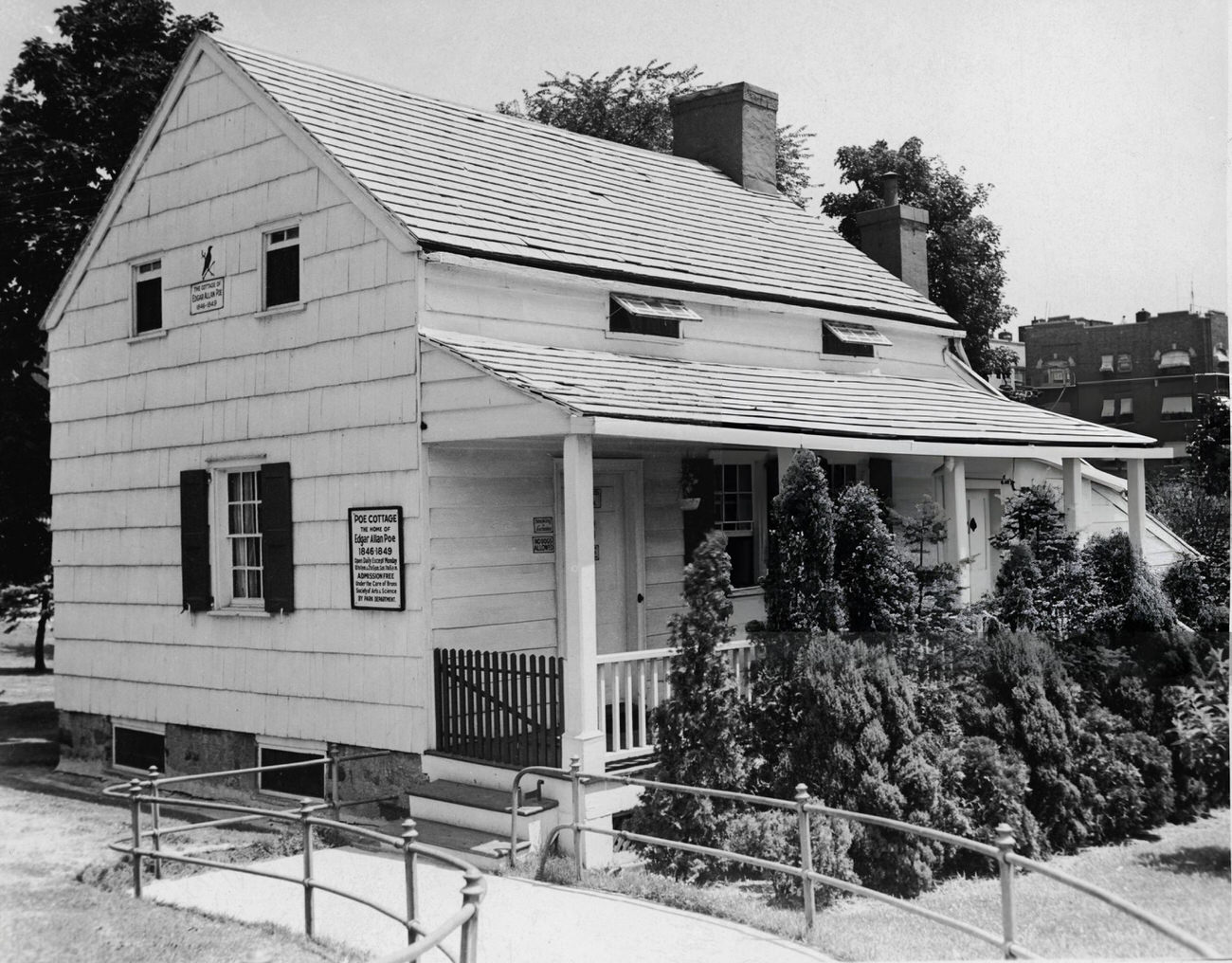
#38 Jake LaMotta receives a hero’s reception in the Bronx after winning the middleweight title, June 18.
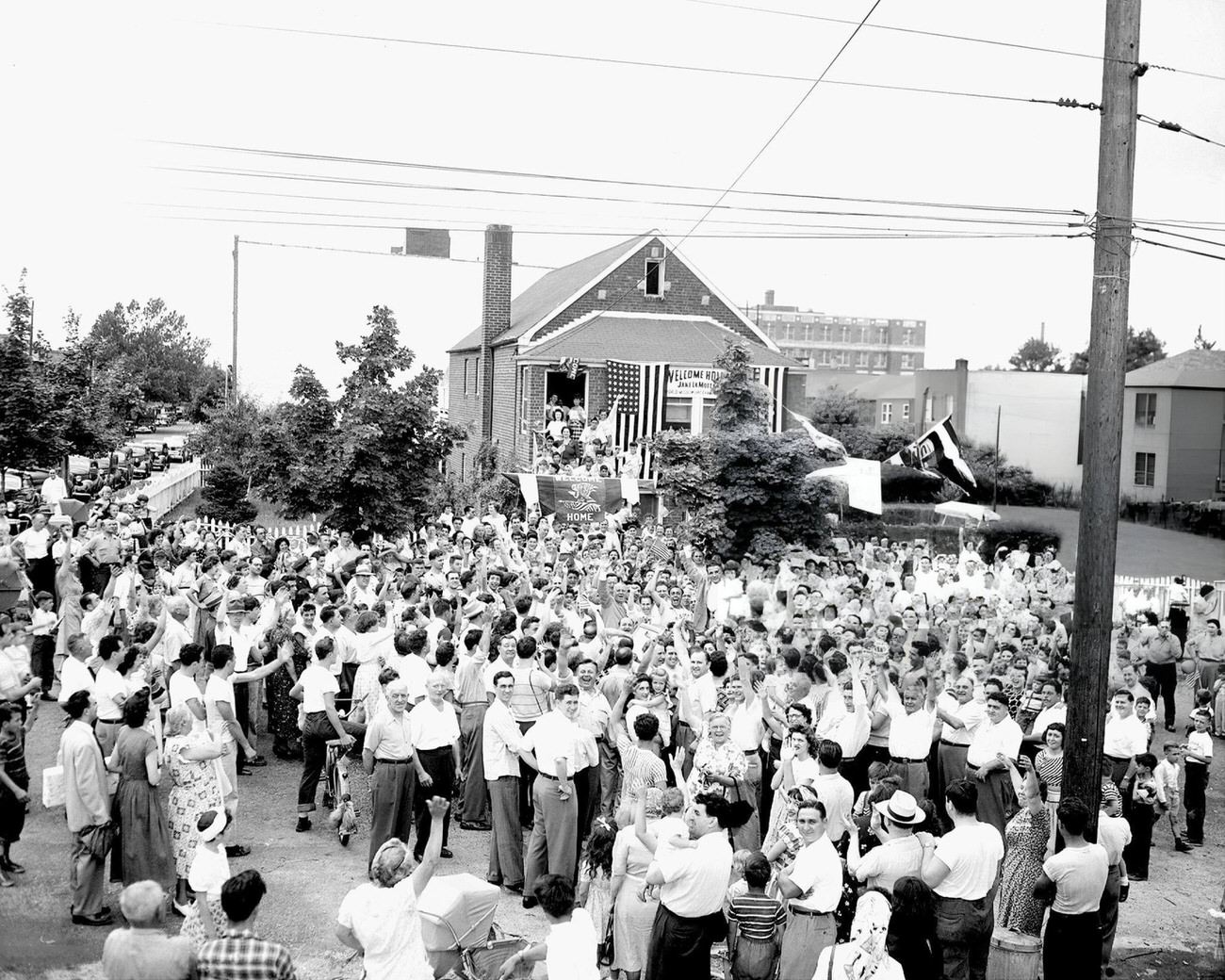
#39 Night view of Fordham Road, the main shopping and entertainment area in the Bronx, 1940s

#40 Outdoor markets serve a lower-class community in the Bronx, offering exotic foodstuffs, 1946.
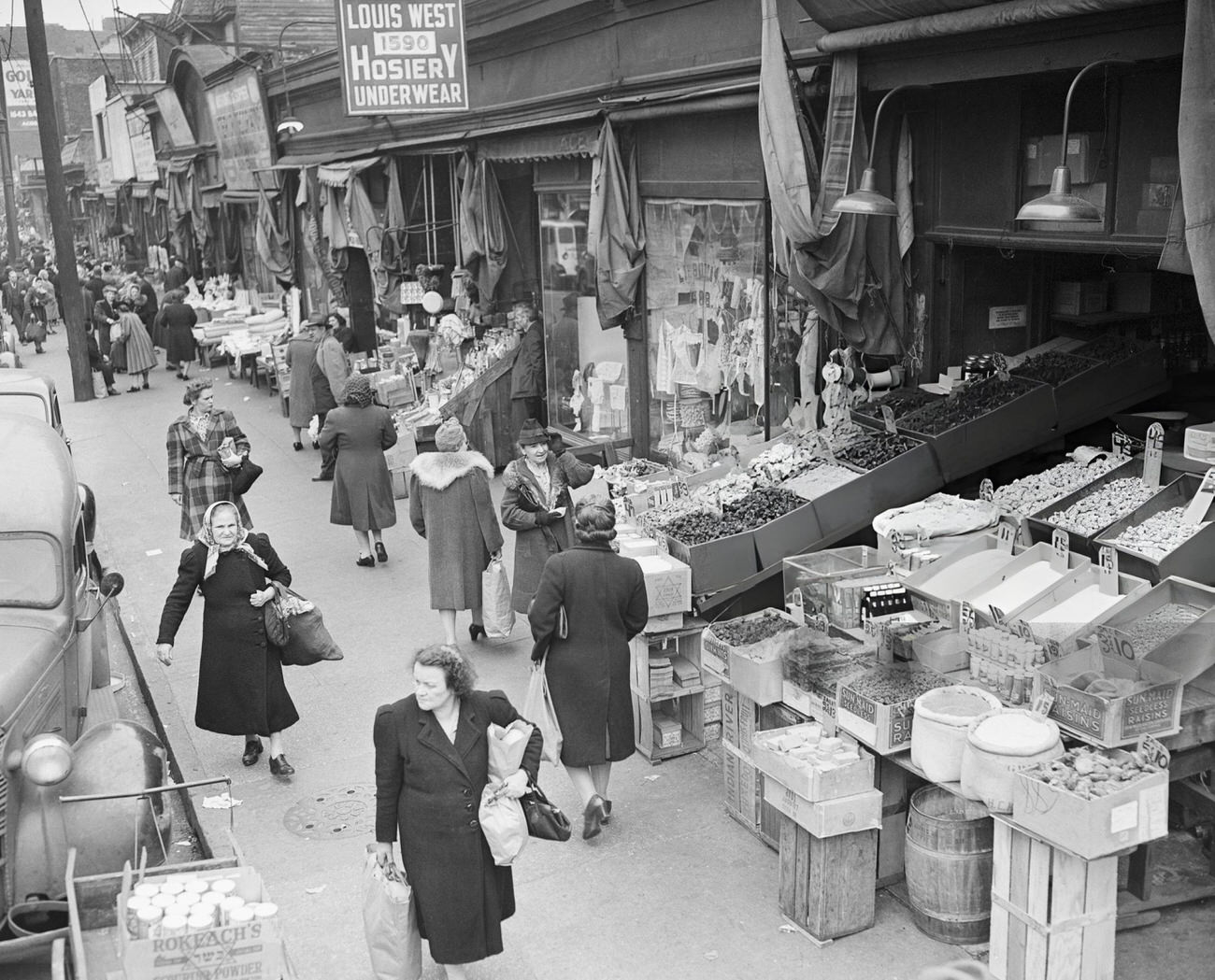
#41 Fans line up to see Babe Ruth lying in state at Yankee Stadium, Hank Greenberg pays tribute, 1940s
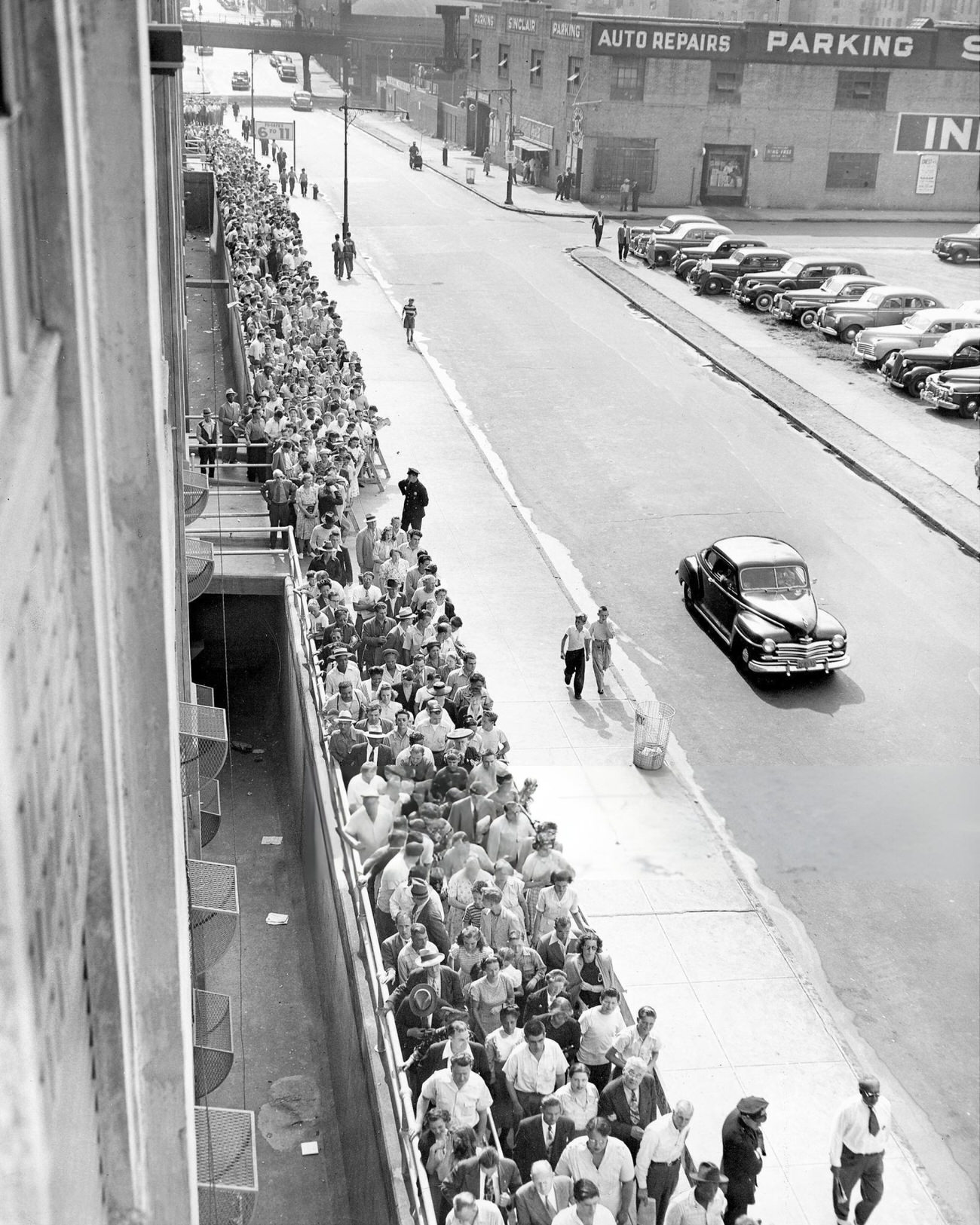
#42 Geoffrey Beck and Barbara Puehl enjoy a snowball fight, disregarding stranded cars in the Bronx, 1940s
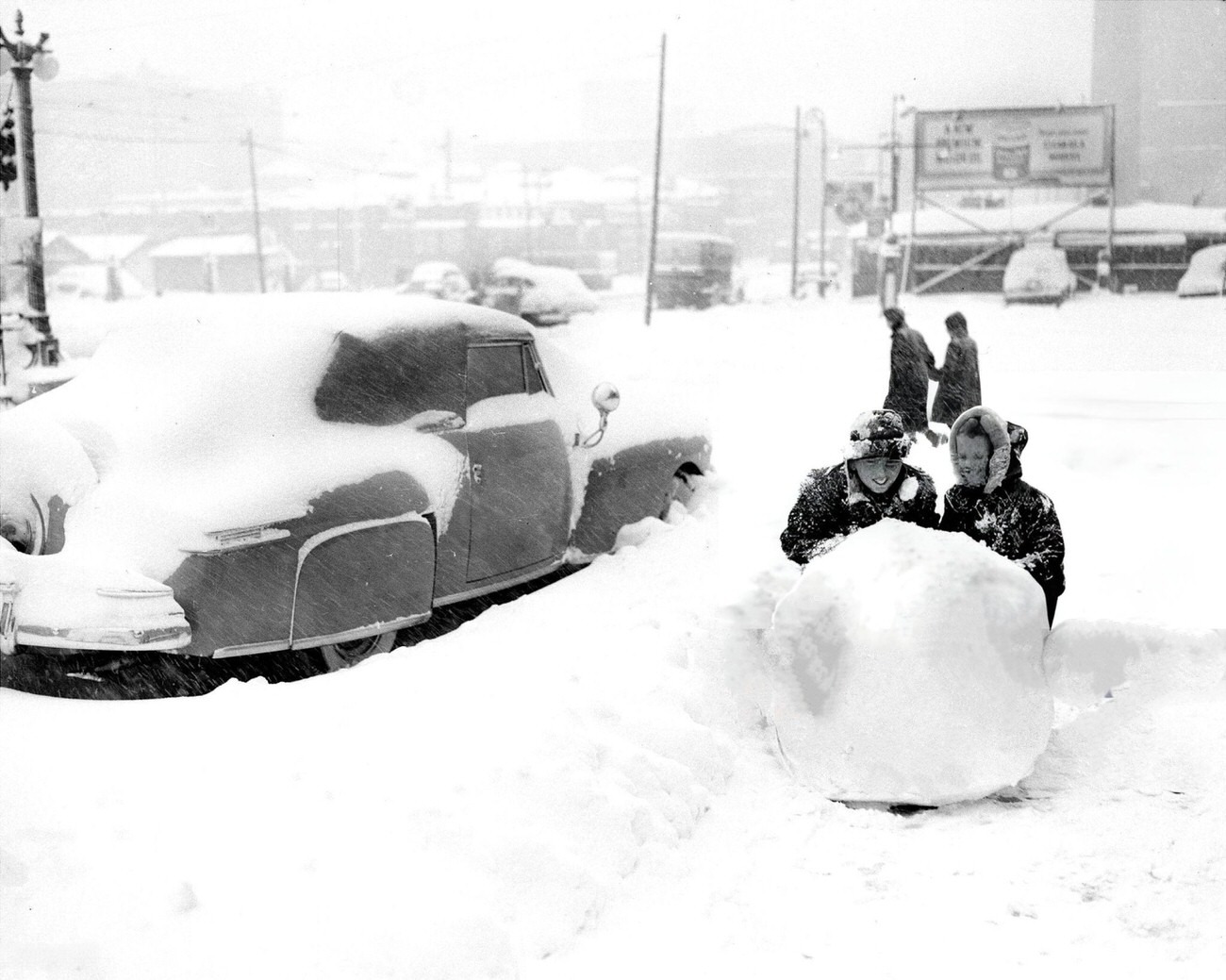
#43 Alexander’s Department Store in the shopping center at the junction of Fordham Road, Bronx, 1940s.
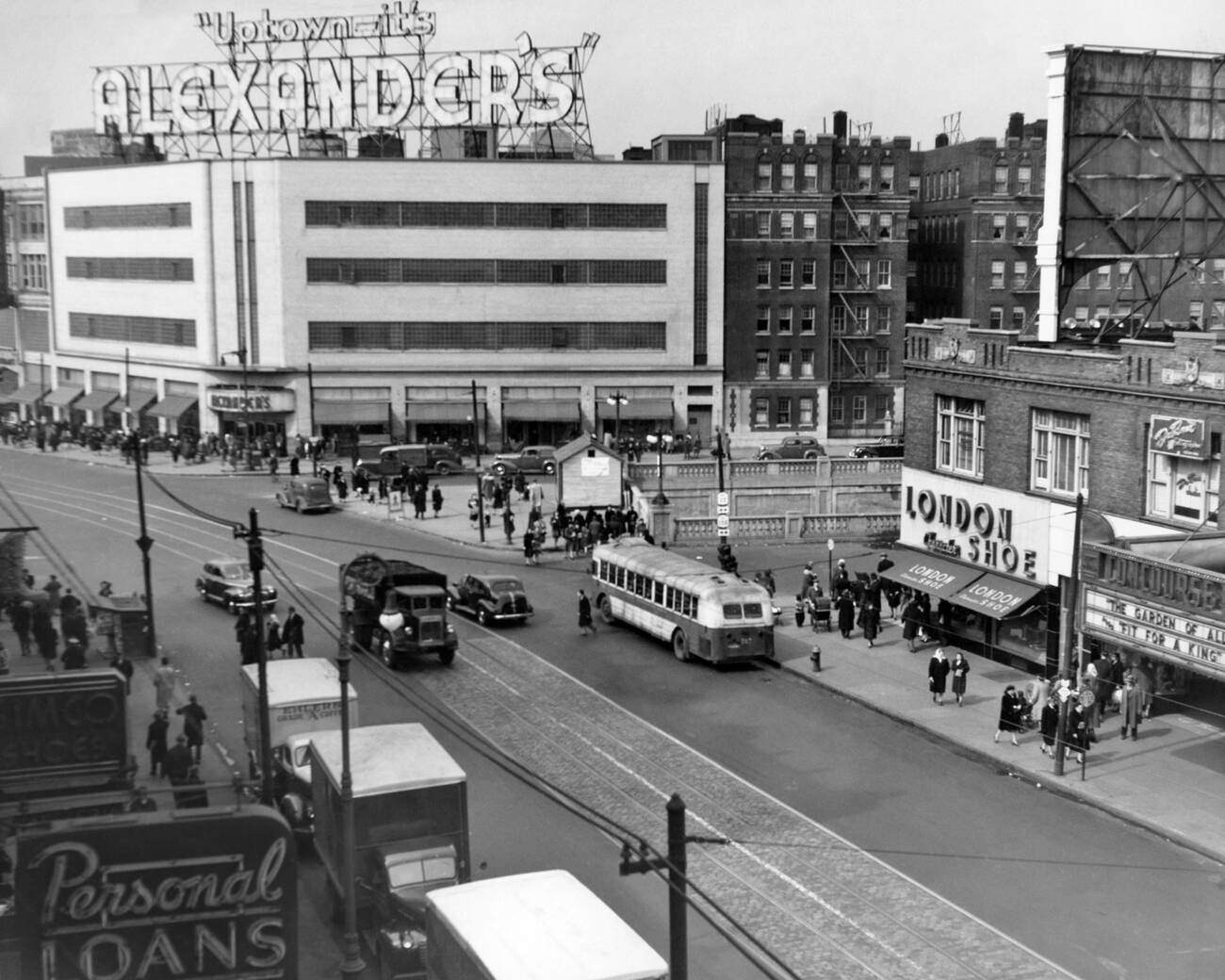
#44 Photograph of Barnes Avenue in the Bronx after the Great Blizzard of 1947, looking north,1947.
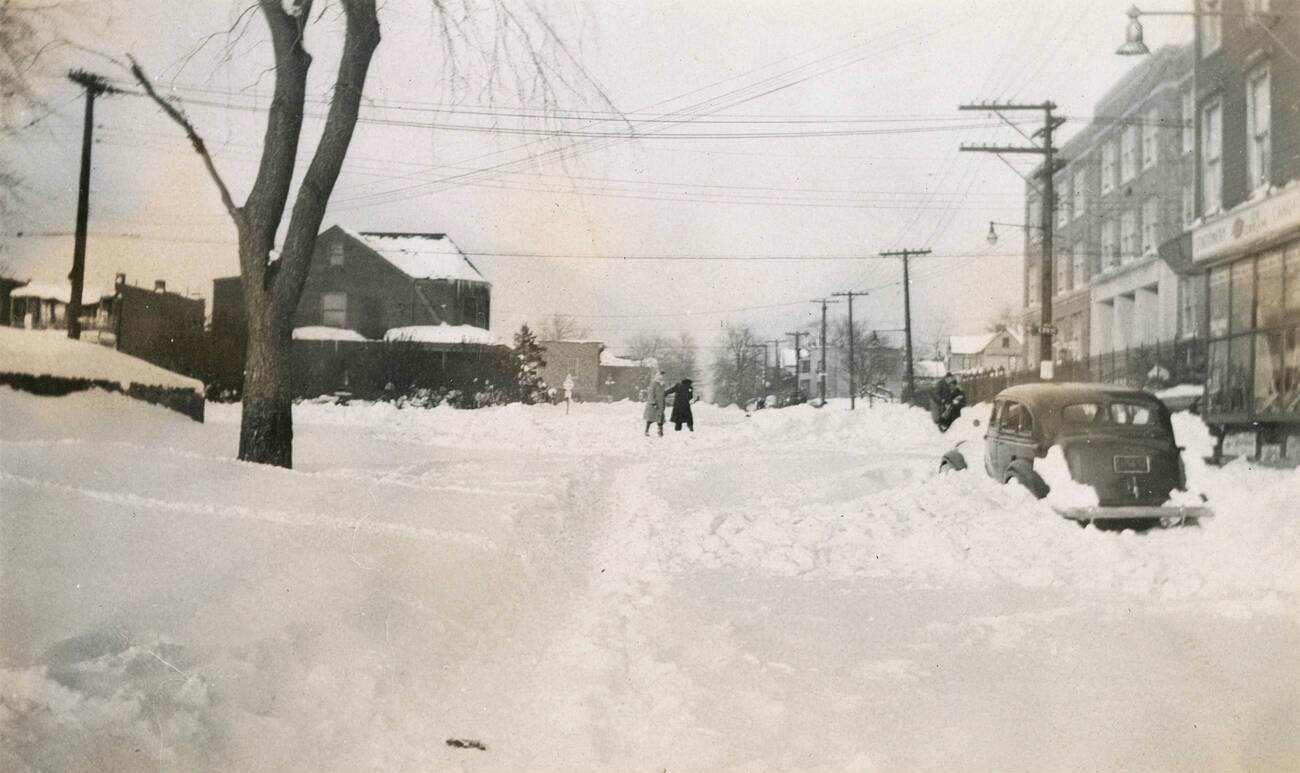



GIPHY App Key not set. Please check settings